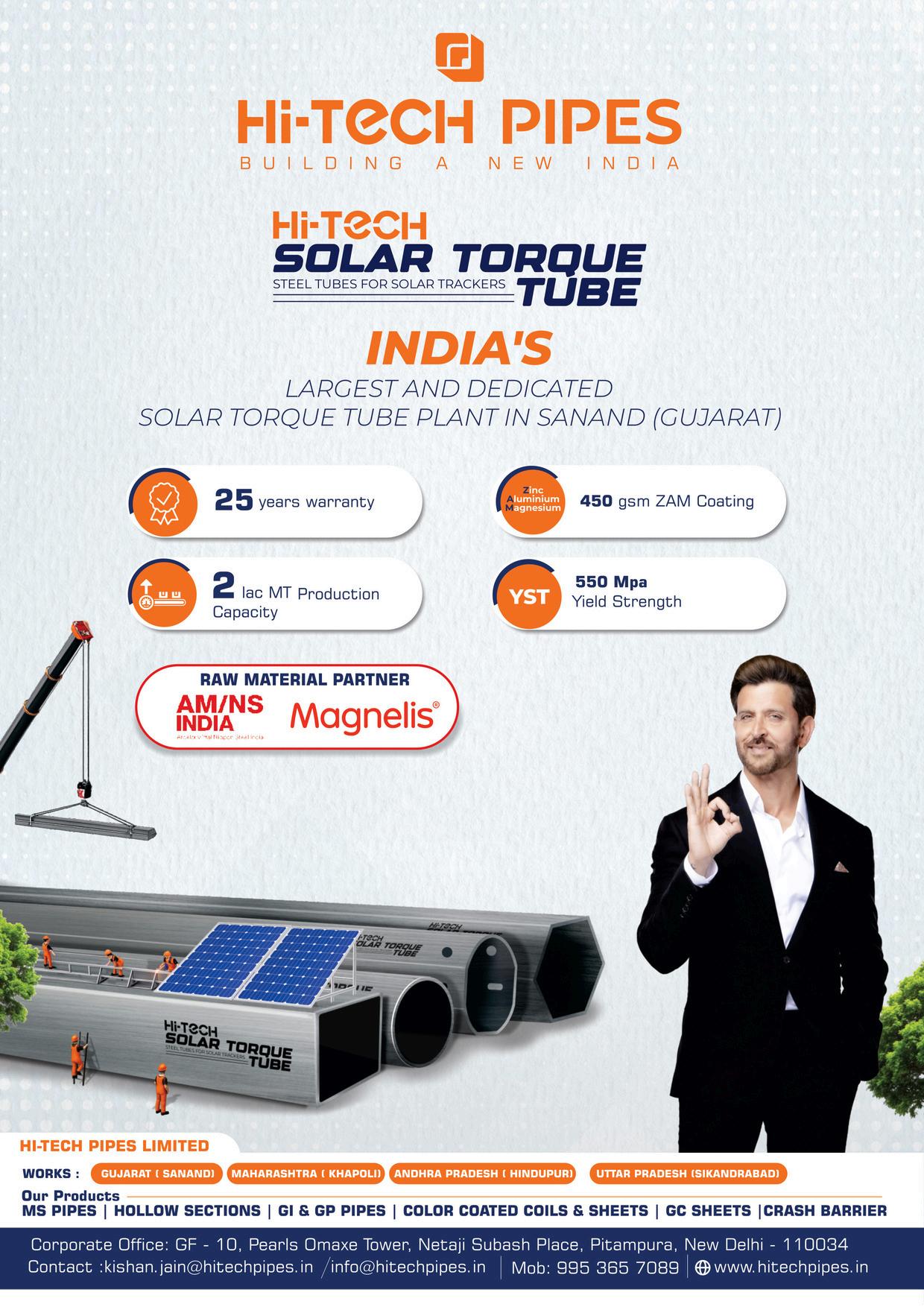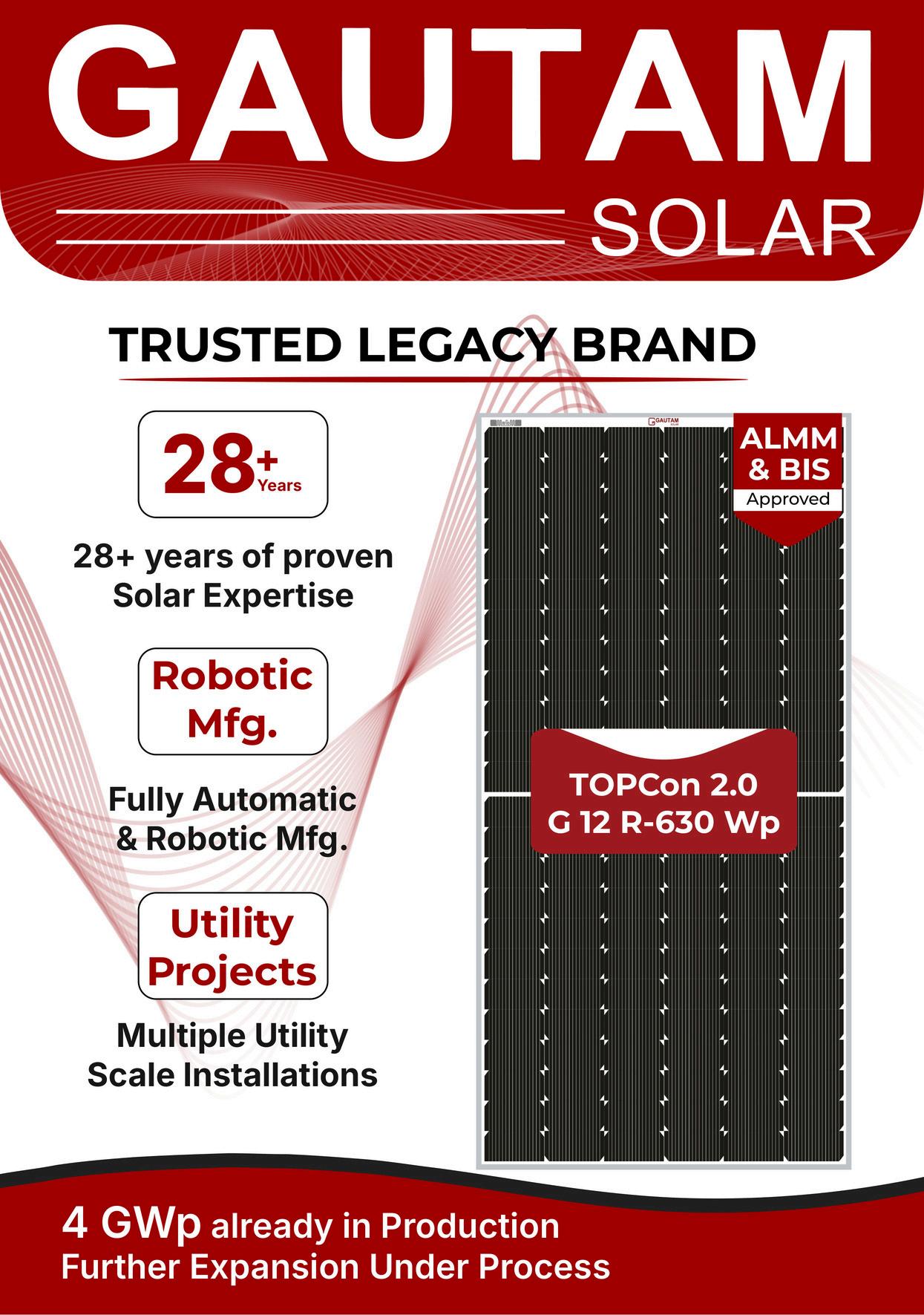

INDIA BUSINESS LEADERSHIP SPECIAL
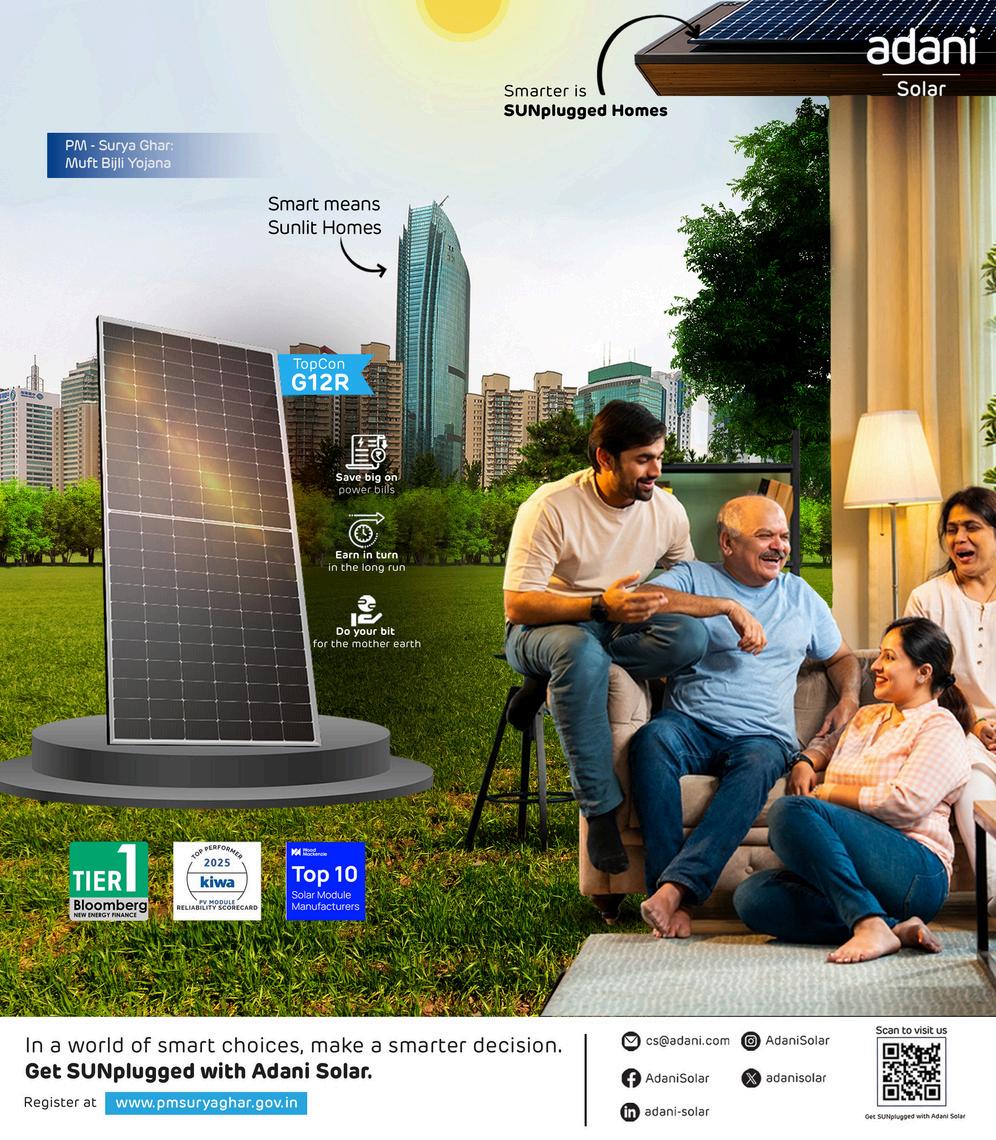













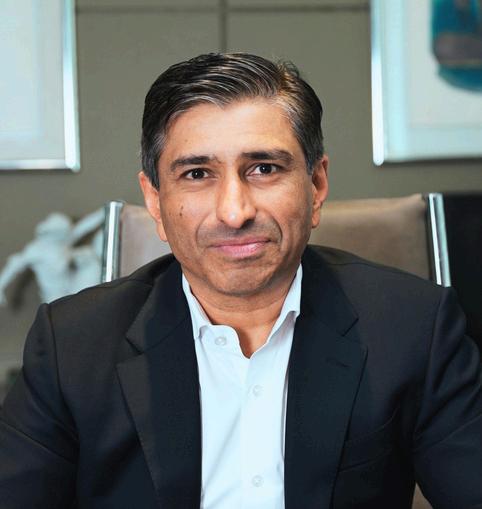













BUSINESS NEWS
Policy & Regulatory
MNRE Issues Draft Guidelines For Series Approval Of Solar Storage Batteries In India
MNRE Issues Clarification On ALMM List-II Rules For Solar PV Cells And Project Compliance
MNRE Updates Waste-To-Energy Guidelines For BioCNG Projects With New Performance Rules
MNRE Extends Solar Parks Scheme Completion Deadline To 2029
MNRE Unveils First National Policy On Geothermal Energy To Boost Clean Power Mix
MNRE Proposes Inclusion Of Solar Wafers In ALMM Framework From 2028
MNRE Approves ₹140 Crore Supplementary Budget For National Bioenergy Programme Phase I
Ministry Of Power Proposes Draft Amendments To Strengthen Captive Generating Plant Regulations
Ministry Of Power Introduces Renewable Consumption Obligation To Boost Green Energy Use
CEA Issues New Circular To Streamline Captive Power Unit Verification For SPVs
CEA Issues New Directive For SPVs To Identify Captive Power Units For FY 2025-26 Verification
CERC Issues Third Amendment To Grid Access Rules 2025 With New Provisions For Solar And Scheduling Flexibility
CERC Third Amendment To GNA Regulations Introduces Solar Hours For Power Scheduling
CERC Reviews Licence Petition For 3 GW Renewable Energy Transmission Project From Raghanesda, Gujarat
West Bengal Issues New Rules To Boost Rooftop Solar For Prosumers From July 31, 2025
DERC Proposes New Draft Rules For Monthly Fuel And Power Purchase Surcharge In Delhi
Andhra Pradesh Issues New Regulations For BESS To Boost Renewable Integration
APERC Issues Draft Rules For Timely Replacement Of Burnt Meters In Andhra Pradesh
Telangana Sets Additional Surcharge To Zero For Open Access Consumers

TNERC Issues New Regulations 2025 For Green Energy Open Access 2025 In Tamil Nadu
HPERC Proposes New Distribution Performance Standards To Enhance Consumer Service And Compensation
GERC Considers Exemption From Net Metering Agreements For Rooftop Solar Under PM Surya Ghar Scheme In Gujarat
Uttarakhand Proposes 2025 Draft Renewable Energy Regulations Including Battery Storage Integration
GERC Seeks Detailed Proof On GST Claims In Solar PPA Change In Law Petitions
GERC Issues Draft Third Amendment To Green Energy Open Access Regulations 2025 With Revised Banking Charges
UPERC Admits Petition For 1200 MW Firm And Dispatchable Renewable Energy Procurement In Uttar Pradesh
UERC Finalizes Second Amendment On Intra-State Open Access Regulations 2018 With Key Changes To CrossSubsidy Surcharge In Uttarakhand
Uttar Pradesh Commission Sets Transmission Charge Rebates To Boost Solar Energy Integration
RERC Invites Comments On Draft Green Energy Open Access Procedure In Rajasthan
Assam Electricity Commission Amends 2024 Open Access Rules To Promote Renewable Energy
Chhattisgarh Releases Draft Multi-Year Tariff Regulations 2025 To Ensure Transparent And Efficient Electricity Pricing
RERC Proposes Consumer-Friendly Amendments To Electricity Supply Code 2025 In Rajasthan
CSERC Allows Exemption From Dedicated Feeder For Captive Solar Open Access In Chhattisgarh
SECI’s 2000 MW Solar + 1000 MW/4000 MWh Storage Projects Get CERC Tariff Approval At ₹3 52–3 53/kWh
RERC Rejects Military Engineer Services Plea For Distribution Licensee Status In Rajasthan Military Stations
RERC Approves Tariffs For 488 MW Solar Projects Under PMKUSUM Feeder Level Solarization In Rajasthan
Rajasthan Plans Community Solar And BESS Deployment To Strengthen Free Electricity Schemes
GERC Fixes Green Energy Banking Charge At ₹1.50 Per Unit In Gujarat Until March 2026 In Gujarat


BUSINESS NEWS
Policy & Regulatory
GERC Imposes ₹1/kWh Additional Surcharge For Open Access Consumers From October 2025
KSERC Rules On Fixed Charges And Security Deposits For Domestic Solar Prosumers In Kerala
MERC Approves MSEDCL’s 1475 MW Solar Power Procurement From NHPC
MERC Approves 780 MW Wind-Solar Hybrid Power Procurement By MSEDCL From NTPC In Maharashtra
UERC Rejects UPCL Petition, Upholds Tariff Order And Regulatory Principles In Uttarakhand
Tender
SECI Launches SECI-FDRE-VII Tender To Secure 1200 MW/4800 MWh Peak Renewable Energy Supply
Coal India Limited Invites EOI For 3,000 MW Solar Power Projects Across India
BHEL Bengaluru Invites Tender For Inverter CAMC Across 128.5 MW Solar PV Sites
Deendayal Port Authority Invites Bids For 1000 MW Solar Power Project In Gujarat
SJVN Green Energy Launches 733 MW Solar Project Tender In Maharashtra To Boost Agricultural Power Supply
CSPDCL Invites Bids for 380 MW/760 MWh Battery Energy Storage Project in Chhattisgarh
UPPCL Floats 375 MW/1500 MWh BESS Tender In Uttar Pradesh
Coal India Limited Eyes 150 MW Solar PV Project With Battery Storage To Enter Renewable Energy Sector
TNGECL Issues 40 MWp Rooftop Solar PV Projects Tender In Tamil Nadu
NTPC Invites Bids For O&M Of 20 MW Floating Solar And Ground Solar PV Plant At Auraiya In Uttar Pradesh
SECI Floats Tender For 13 MW Rooftop Solar Projects In Puducherry Under RESCO Mode
DVC Floats Tender For 10 MW Floating Solar Project At Raghunathpur Thermal Power Station
IOCL Invites Bids For Operation And Maintenance Of 5 MW Solar Plant In Rajasthan
ITI Limited Invites Bids For 5 MW Solar Power Project In Jharkhand

Uttar Pradesh Electricity Regulatory Commission Upholds Existing Tariff In NPCL-GNIDA Solar Power Dispute
PSERC Dismisses PSPCL’s Review Petition On 1450 MW Solar Power Procurement In Punjab
CERC Grants License For POWERGRID Kurnool-IV Transmission Project To Integrate 4 5 GW Renewable Energy
APTEL Overturns KERC Order, Restores Original Solar Tariff And Cancels Liquidated Damages In Karnataka
APTEL Upholds CERC’s Rejection Of Tariff For 500 MW/1000 MWh Pilot Battery Storage Project
NTPC Floats Tender For 2 MW Solar Project At Pakri Barwadih In Jharkhand
RFS Issued For 1 3 MWp Rooftop Solar Project At Medical College And Hospital In Raigarh, Chhattisgarh Under RESCO Model
Indian Oil Floats Tender For 385 kWp Rooftop Solar Project At Taloja Plant In Maharashtra
NTPC Vidyut Vyapar Nigam Invites Bids For 1 MW Rooftop Solar Project At DRDO Jodhpur In Rajasthan
REIL Invites Bids For 5 MW Rooftop Solar Projects In Jammu & Kashmir
Ferozepur Cantonment Board Invites Bids For 29 kW Rooftop Solar PV Projects
MGIMS Sevagram Floats Tender for 1000 KW Solar PV Project
SECI Invites Bids For 1000 kW Rooftop Solar Project At Rashtrapati Bhavan
SECI Invites Proposals For DPR Preparation Of Green Hydrogen Hubs Under National Mission
National Institute of Solar Energy Invites Start-Ups To Pioneer Green Hydrogen Pilot Projects Under National Mission
CSERC Issues Tender For Detailed Audit Of CSPDCL To Address Revenue Gaps In Chhattisgarh
AAI Invites Bids For 50 kW Rooftop Solar Power Project At Dimapur Airport In Nagaland
Ferozepur Cantonment Board Invites Bids For 29 kW Rooftop Solar PV Projects
MAHAPREIT Invites Agencies For Solar Project Pre-Feasibility And DPR Preparation In Maharashtra



Leading India’s Clean Energy Transition:
How Visionary Business Leadership Is Powering The Renewable Future

India is standing at a defining moment in its journey towards energy security and sustainability The growing power demand, the urgent need to reduce carbon emissions, and the opportunities created by new technologies are shaping the way the country generates and consumes energy In this transformation, the role of business leadership is becoming more crucial than ever. Visionary leaders across industries are not only investing in renewable energy but also building strategies that align profitability with sustainability Their decisions are creating a clean energy ecosystem that goes beyond power generation to include storage, green hydrogen, and electric mobility
In recent years, India has set ambitious targets, such as achieving 500 GW of non-fossil fuel capacity by 2030 and reaching net zero by 2070 Meeting these goals requires massive capital infusion, cutting-edge technology, and bold leadership. It is here that business leaders are stepping up, bridging the gap between policy intent and ground-level execution Companies in solar, wind, hydropower, and bioenergy are expanding capacity at an unprecedented speed Large corporations are not only building renewable energy portfolios for their own operations but are also supplying clean power to industries and households through innovative models like open access and captive generation
One of the key strengths of visionary leadership lies in looking at clean energy not just as an obligation but as an opportunity for long-term value creation. Business leaders are seeing renewables as drivers of efficiency, resilience, and competitiveness Investments in hybrid solutions combining solar, wind, and storage are ensuring a round-the-clock supply of clean electricity. Leaders are also encouraging innovation in financing, with green bonds, infrastructure investment trusts, and sustainability-linked loans supporting projects that were once seen as risky. By taking these bold steps, businesses are making renewable energy mainstream in India’s economic growth story

The leadership vision is also visible in the push for decentralized solutions Rooftop solar, microgrids, and community energy projects are gaining traction as companies partner with state governments, startups, and local entrepreneurs. These initiatives are empowering rural communities, improving livelihoods, and reducing dependence on polluting fuels At the same time, large-scale investments in manufacturing, such as solar modules, batteries, and hydrogen electrolysers, are creating new industries and jobs within the country Business leaders are making India not only a major renewable energy consumer but also a global supplier of clean energy technologies
Equally important is the focus on collaboration. Visionary leaders are building strong partnerships with governments, research institutions, and international investors Their ability to align business interests with national priorities is accelerating the pace of India’s clean energy transition They are setting examples by integrating sustainability into corporate strategies, adopting transparent ESG practices, and linking executive goals with climate performance This approach is influencing other businesses to follow the path of responsibility and innovation

The renewable future of India depends not just on policies and targets but on the courage and foresight of leaders who can convert ambition into action With visionary business leadership at the forefront, India is proving that clean energy is not a challenge but an opportunity to redefine growth, create jobs, protect the environment, and secure a sustainable future for generations to come



Decoding Investment Tre
Where Business Leaders See T
Growth Wave In India’s Solar M

India’s solar market is at an inflection point After years of capacity growth driven by utility-scale auctions, business leaders are shifting their attention to where the next wave of investment will produce the best returns and strategic advantage Several clear trends are emerging each shaped by policy shifts, technological progress, changing demand patterns, and new sources of capital
First, distributed generation, especially rooftop solar for commercial and industrial customers, has become a top focus Large firms are looking to lock in predictable, low-cost power and meet ESG targets. Leaders see rooftop solar combined with captive consumption, rooftop-plus-storage, and onsite microgrids as lower-risk, higher-value investments because they cut exposure to transmission constraints and open new revenue streams from demand charge management and ancillary services
Second, energy storage is now central to investment plans. As more intermittent solar comes online, battery energy storage systems (BESS) convert curtailed energy into dispatchable value Business leaders view storage as a way to smooth revenues, participate in frequency markets, and offer integrated “solar-plusstorage” solutions that attract higher tariffs and longer contracts Falling battery costs and better financing structures have made many projects bankable where they were not two to three years ago
Third, manufacturing and supply-chain localization are rising up the priority list. Policy pushes like production-linked incentives and import safeguards have prompted executives to re-evaluate upstream investments Many see local module and cell manufacturing as a strategic hedge: it reduces exposure to global supply shocks, supports faster project timelines, and opens government-linked incentives For investors, domestic manufacturing paired with project pipelines can improve margins and lower policy risk

Fourth, corporate power purchase agreements (CPPAs) and merchant segments are evolving. As large corporates commit to renewable procurement, long-term CPPAs remain attractive; yet leaders are also exploring flexible contracts, hybrid PPAs, and green products that blend renewable attributes and storage. The merchant market, though riskier, is drawing interest from funds that can tolerate price volatility and identify arbitrage opportunities between regional markets.
Fifth, new financing models are gaining ground Non-bank financial companies, infrastructure funds, and green bonds are filling gaps left by traditional lenders Leaders value tailored financing securitized cash flows, revenue-backed instruments, and blended finance which reduce upfront capital strain and align returns with project life cycles Public-private partnerships and viability gap funding for innovative models are also under consideration
Sixth, digitalization and project optimization attract investment Data-driven O&M, AI for yield forecasting, and performance guarantees boost asset uptime and investor confidence Companies that invest in digital stacks expect lower operating costs and better asset valuations
Finally, adjacent opportunities such as green hydrogen, agrivoltaics, and EV-charging linked to solar assets are being watched closely These niches promise new demand pools and integrated solutions, and business leaders are positioning early to secure first-mover advantages.
India’s next growth wave in solar is not just about adding GW of capacity. It is about integrating storage, localizing supply chains, innovating finance, and offering value-added services that align with corporate sustainability goals Leaders who balance policy intelligence, technical capability, and flexible capital structures will likely capture the highest returns in this maturing market
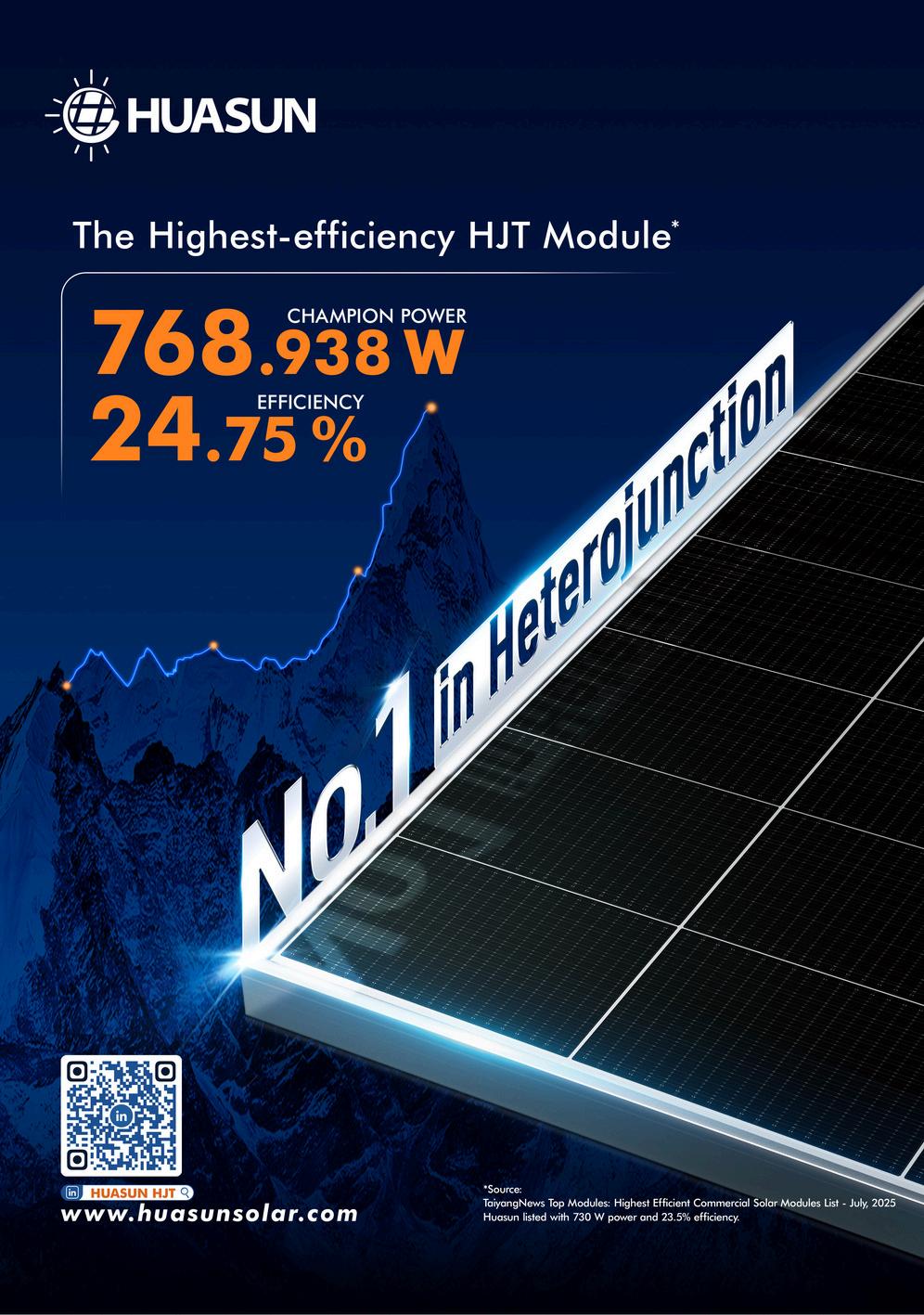


POLICY RESEARCH
PLI And Make In India:
A Policy-Driven Boost To Solar PV Manufacturing Leadership

India’s renewable energy journey is closely tied to its ambitions of becoming a global leader in solar photovoltaic (PV) manufacturing In this context, the Production Linked Incentive (PLI) scheme and the government’s Make in India initiative have emerged as key policy tools, driving competitiveness, investments, and technology adoption in the domestic solar manufacturing sector
The PLI scheme for high-efficiency solar PV modules, first announced in 2021 and expanded in 2022 with an allocation of ₹24,000 crore, seeks to establish a fully integrated solar manufacturing ecosystem in India. The objective is clear: to reduce import dependence on China, build domestic capacity across the solar value chain from polysilicon to wafers, cells, and modules and enable India to play a significant role in the global energy transition Under the scheme, manufacturers receive direct incentives linked to production and sales, encouraging higher efficiency modules and backward integration
The Make in India programme complements this effort by creating an enabling environment for investment, job creation, and skill development Together, these policies have already started yielding results. Leading companies such as Reliance, Adani, Tata Power Solar, and Vikram Solar have announced or commissioned giga-scale facilities for integrated module production. In parallel, global players, including First Solar and Huasun, are exploring or entering India’s market, further diversifying the ecosystem
Policy-driven leadership in solar manufacturing is not only about building factories It is also about ensuring technology adoption, sustainability, and competitiveness India’s manufacturers are now focusing on advanced cell technologies such as TOPCon, HJT, and perovskites to ensure global market relevance The PLI scheme’s emphasis on high-efficiency modules directly pushes industry players to upgrade from conventional mono-PERC modules to nextgeneration technologies. This positions India not merely as a volume player, but as a quality-driven competitor

Beyond technology, the multiplier effect of these policies extends to supply chain localization Backward integration into polysilicon and wafers a weak link in India’s solar industry is gradually being addressed under PLI incentives This is critical because India currently imports nearly all polysilicon If successful, the domestic ecosystem will not only lower costs but also provide resilience against global supply chain disruptions.
The policies are also aligned with India’s climate commitments and energy goals Achieving 500 GW of renewable capacity by 2030, including 280 GW of solar, requires strong local manufacturing to support large-scale deployment Policy-led manufacturing leadership ensures India is not merely a consumer of solar technology but also a global supplier
Challenges remain Land acquisition, financing, and timely disbursement of incentives continue to be hurdles for manufacturers Moreover, global trade dynamics including safeguard duties, anti-dumping measures, and volatile pricing of raw materials pose risks to competitiveness. To sustain policydriven leadership, India must combine PLI with complementary reforms in logistics, R&D funding, and export competitiveness.
Business leadership plays a vital role in bridging policy frameworks with execution Indian solar companies are making strategic decisions not only on capacity but also on partnerships, mergers, and innovation pipelines CEOs and industry leaders are at the forefront of balancing expansion with long-term technology bets This synergy of policy push and leadership is defining India’s path in solar manufacturing
The PLI scheme and Make in India initiative represent more than financial support they are catalysts for reshaping India’s role in the global solar industry By combining visionary policy with strong business leadership, India has the potential to achieve self-reliance, strengthen energy security, and emerge as a global hub for renewable manufacturing in the decade ahead.

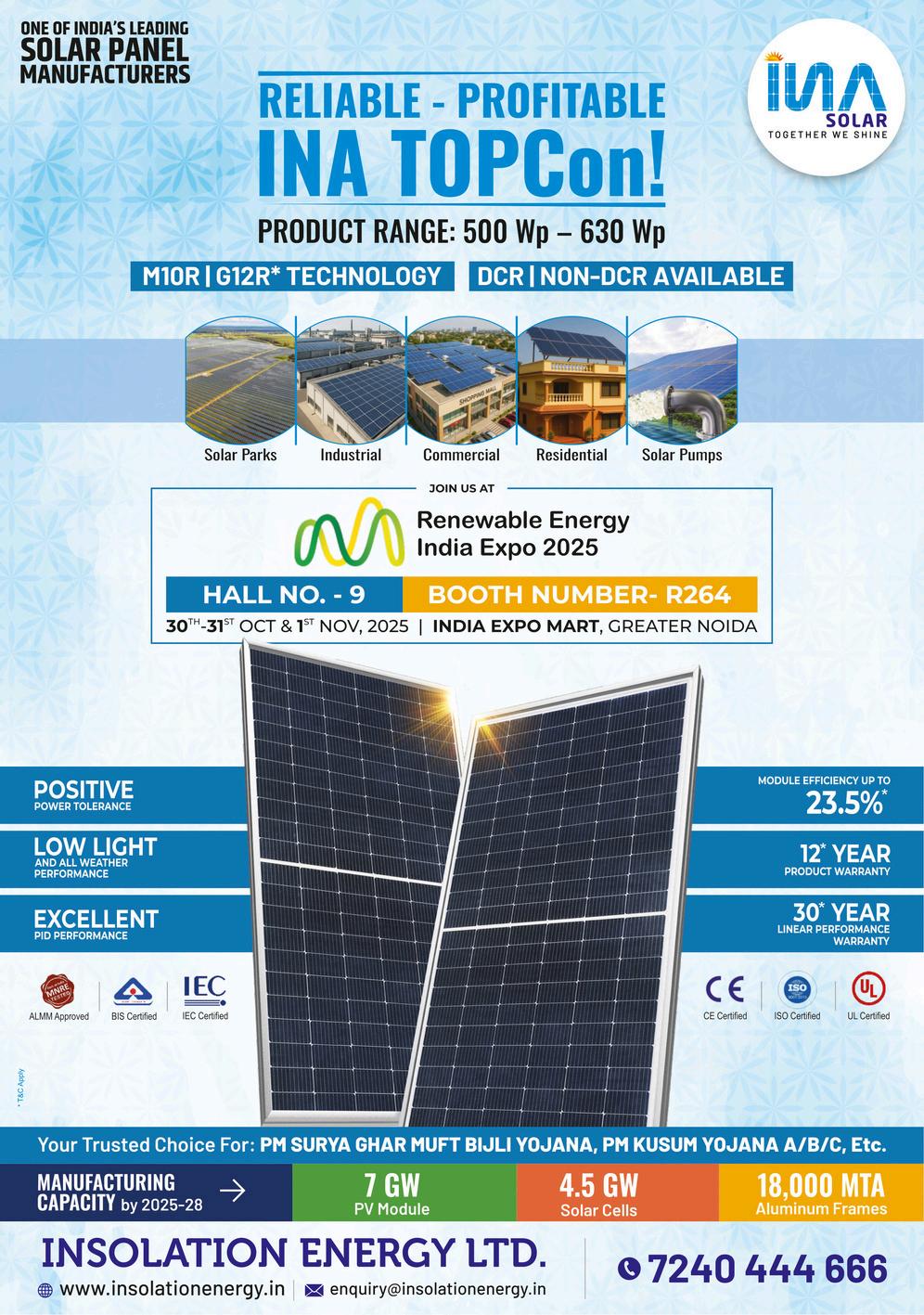

HowIndia’sVisionaryLeadershipisDriving
GLOBAL SOLAR GROWTH
Pioneering Global Initiatives
From Clean Energy to Cost-Effective Power
Ambitious Targets and Policy Framework
Energy Storage: The Next Frontier
Looking Ahead
www


Women In Solar Leadership:
Breaking Barriers And Building India’s Renewable Future

The solar energy sector in India is transforming, not only in terms of capacity expansion and technological innovation but also in leadership Traditionally seen as a male-dominated industry, renewable energy is now witnessing the rise of women leaders who are shaping its future with vision, resilience, and strategic acumen These leaders are not just breaking barriers but also building inclusive pathways that contribute to India’s ambitious renewable energy goals
India has set a target of achieving 500 GW of non-fossil fuel capacity by 2030, with solar expected to account for a major share In this journey, leadership diversity is emerging as a critical factor Women in solar leadership are taking charge across the value chain from manufacturing and project development to policy advocacy, financing, and technology solutions Their growing presence reflects both a societal shift and an industry recognition that diverse perspectives foster innovation and long-term growth
The challenges for women in this sector, however, remain significant Cultural biases, unequal representation in boardrooms, and limited access to mentorship have often slowed progress. Despite these hurdles, several women have risen to the forefront, driving change through strategic leadership and technical expertise. Leaders such as entrepreneurs in module manufacturing, senior executives in solar EPC firms, and policy advocates have demonstrated that the industry’s growth is tied to inclusivity. By building resilient businesses, negotiating largescale solar financing, and promoting sustainable community engagement, women leaders are proving their ability to combine profitability with purpose.
Research indicates that companies with higher gender diversity in leadership positions deliver better financial performance and stronger governance In the solar sector, this translates into more

holistic project planning, people-centered innovation, and an emphasis on long-term sustainability Women leaders are also playing a key role in driving ESG frameworks, ensuring that solar growth is not only about megawatts but also about environmental stewardship and social equity
Another critical contribution is in the field of skill development. Women in leadership are championing programs that prepare the next generation of female engineers, technicians, and entrepreneurs in solar energy. By fostering training initiatives and creating networks of mentorship, they are building a talent pipeline that ensures continuity of women’s participation in this highgrowth industry.
Policy and institutional support are also paving the way Initiatives by the Ministry of New and Renewable Energy, industry associations, and skill councils are focusing on gender inclusion Yet, much more needs to be done to create equal opportunities, flexible work environments, and stronger representation in decision-making roles
The rise of women in solar leadership is not only a story of empowerment but also of business strategy In a sector where innovation and resilience are critical, women leaders bring perspectives that align growth with inclusivity. As India continues its march toward becoming a global renewable energy powerhouse, the role of women leaders will be central in shaping a future that is equitable, sustainable, and forward-looking.
The solar revolution in India is, therefore, not just about panels and policies it is about people. Women in leadership are ensuring that this revolution becomes a collective movement, where barriers are dismantled, opportunities are multiplied, and the renewable future is built on the strength of diverse voices.


INDIA’S SOLAR VISION
HowTopLeadersareShapingStrategiestoMeetthe 500GWRenewableEnergyTarget
Key government initiatives and their impacts
Role of private and corporate leadership
Future pathways
JAYSHREEVANVEER

INVESTMENT OUTLOOK
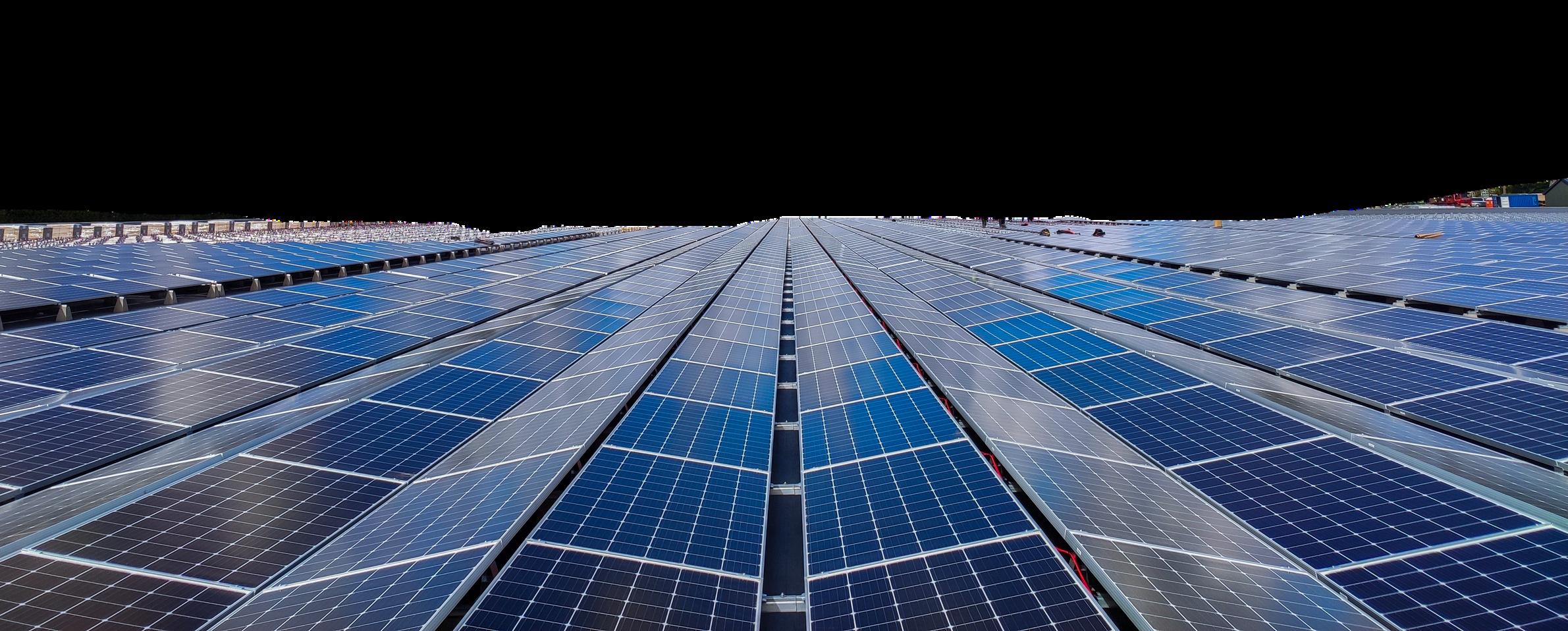
Financing The Future:
Why Solar Investments Are Shaping India’s Clean Energy Leadership
India’s journey toward clean energy leadership has been powered not only by technology and policy but also by the availability of innovative financing mechanisms Solar power, which has become the backbone of the renewable energy sector, is attracting large-scale investments that are reshaping the country’s energy landscape With India setting a target of 500 GW of renewable energy capacity by 2030, financing solar projects is no longer a matter of choice but a necessity for achieving global climate commitments and securing long-term energy independence.
The rise of solar financing in India is closely linked to a supportive policy framework, including the Production Linked Incentive (PLI) scheme for solar manufacturing, accelerated depreciation benefits, viability gap funding, and concessional loans from multilateral agencies These measures have reduced investor risk and helped bring down the cost of capital, which remains a critical determinant of project viability International institutions like the International Finance Corporation (IFC), Asian Development Bank (ADB), and the U S International Development Finance Corporation (DFC) have also stepped in with low-cost financing, signaling global confidence in India’s solar growth story
Private capital is now playing an equally vital role Domestic banks and non-banking financial companies (NBFCs) are expanding their renewable portfolios, while green bonds and infrastructure investment trusts (InvITs) are opening new channels for long-term funding The growth of ESG (Environmental, Social, and Governance) investing has further strengthened solar’s appeal, as global funds increasingly seek to align portfolios with sustainability goals India’s solar sector has already seen billion-dollar inflows from pension funds and sovereign wealth funds, underlining the maturity of its clean energy market

One of the most transformative trends is the evolution of innovative financing models such as solar leasing, pay-as-you-go systems, and rooftop solar loans for small and medium enterprises (SMEs) These models democratize access to solar power, allowing businesses and households to adopt clean energy without heavy upfront investments The success of such mechanisms is visible in India’s growing rooftop solar market, which is being driven by MSMEs and urban households that see solar not just as an environmental choice but also as a hedge against rising electricity tariffs
However, challenges remain High interest rates on domestic borrowing, limited risk mitigation instruments, and delays in payment security mechanisms continue to strain developers. Moreover, financing for distributed solar and storage projects still lags behind utility-scale projects due to perceived credit risks Addressing these issues requires stronger collaboration between policymakers, banks, and international investors to create blended finance instruments, credit enhancement mechanisms, and insurance products that de-risk investments in emerging segments
Despite these hurdles, India’s leadership in solar financing is undeniable By building an ecosystem where policy certainty, investor confidence, and innovative financing converge, India is not only accelerating its renewable energy transition but also setting a template for other emerging economies The narrative has shifted from whether solar is viable to how quickly it can be scaled, and financing is at the center of this transformation.
As the global race for clean energy leadership intensifies, India’s ability to attract and mobilize solar investments will determine its position on the world stage The future of financing is not just about capital flows it is about channeling resources into projects that create sustainable growth, energy security, and climate resilience. Solar investments are, therefore, more than financial decisions; they are strategic bets on India’s role as a leader in the global clean energy revolution
NEXT-GEN LEADERSHIP

CURRENT AFFAIRS
Policy Shifts And Leadership Response:
How India’s Solar CEOs Navigate Regulatory Changes In 2025

India’s solar sector saw big policy changes in 2025, and company leaders had to act fast The government continued pushing domestic manufacturing through incentives while also adjusting import duties and updating technical rules for projects and modules These policy shifts aimed to grow local value addition without slowing down installations For CEOs, this created both opportunity and risk opportunity to partner with Indian manufacturers and capture incentives, and risk from sudden changes that can affect project costs and timelines
To manage this, many solar companies shifted their procurement and contracting strategies Where developers once relied heavily on imported modules to keep bid prices low, they began securing supplies from domestic plants that qualify for incentives CEOs negotiated longer-term supply contracts and forward-price agreements to avoid last-minute cost shocks. This helped protect project margins and gave lenders and investors more confidence in project returns
Regulatory updates also raised the bar on technical compliance New draft guidelines required stricter testing, documentation, and approvals for modules and series CEOs responded by strengthening quality control: increasing sample testing, hiring technical managers for procurement oversight, and choosing suppliers with clear lab approvals and local value-add proof Treating compliance as a board-level issue reduced delays at commissioning and lowered post-commissioning disputes.
Financial teams changed how they planned funding. With duties, taxes, and incentive timelines shifting, CFOs revised leverage plans and staged equity infusions to match when incentives would arrive. Many firms used blended finance combining commercial loans with concessional debt or bonds to keep the overall cost of capital manageable CEOs also prioritized projects that could be completed quickly to capture incentive windows and tax advantages before rules changed again
Another important change was the diversification of customers. Since state utilities (discoms) can be slow to sign and pay for power, many companies expanded into corporate power purchase agreements and merchant markets. They also included payment security mechanisms and escrow arrangements in state bids to shield cash flows from discom payment delays This mix of customers reduced dependence on any single buyer and made revenues more predictable
Leadership also stepped up advocacy and engagement with policymakers CEOs and trade bodies increased dialogue with ministries and regulators to seek clarity on timelines and implementation Clear communication helped reduce uncertainty for the whole sector and signaled to investors that management teams were proactively managing regulatory risk
The key lesson from 2025 is that regulatory agility is now essential Solar CEOs must combine project execution skills with policy reading, close ties to domestic manufacturers, robust compliance systems, and smarter financial planning Policymakers can help by announcing changes with clear timelines and transitional provisions and by improving payment security for discoms When both sides work together, policy becomes an input to planning rather than an unpredictable shock, allowing India’s solar ambition to keep growing even as the rules change

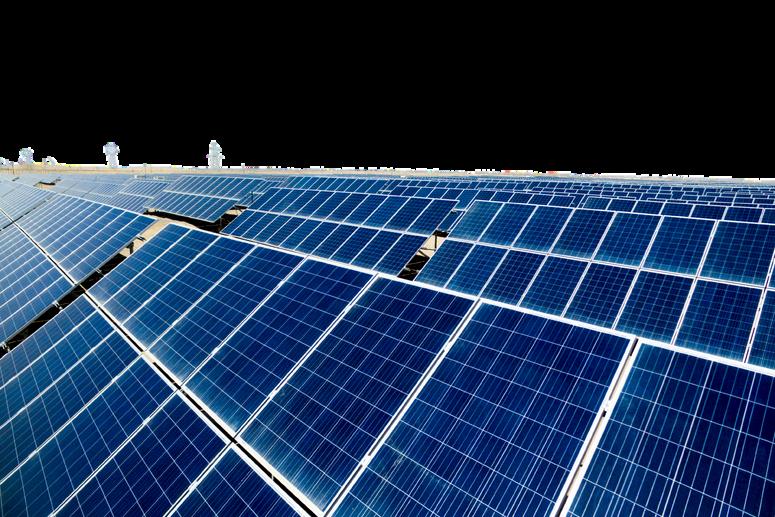
UTILITY-SCALESOLARv.DISTRIBUTEDSOLARININDIA:
WHERE SHOULD LEADERS FOCUS?
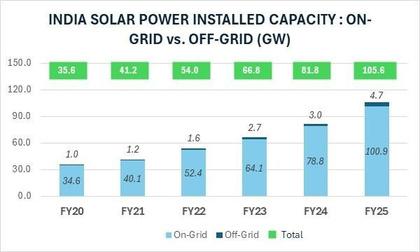
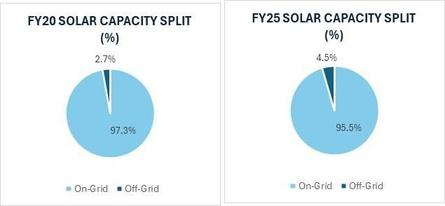
Challenges of Grid-Connected Plants Vs Off-Grid Plants
India’s Solar Targets for 2030
SUCCESS STORY

S&PGlobal y g recognizes GoodWeasTier1invertersupplier
Global market intelligence provider S&P Global Commodity Insights have recognized GoodWe as Tier1 PV inverter supplier in their Cleantech Companies list for 2025 S&P Global Commodity Insights uses a wide range of metrics to help developers, offtakers and other stakeholders make informed decisions in a crowded market with numerous new and old players The 2025 Tier1 assessment evaluated global manufacturers in six key dimensions: Market Presence, Market Share, Operational Capacity, Global Diversification, Financial Performance and Sustainability Metrics.
S&P Global Commodity Insights define the relevance of their Tier list: “In today’s overcrowded, and competitive market, cleantech manufacturers must differentiate themselves to win contracts, while project developers seek reliable, reputable partners The Tier1 designation helps both sides of the market make informed decisions by spotlighting suppliers that surpass a threshold of rigorous, relevant criteria ”
Manufacturing with 15 years of experience
GoodWe is a world-leading manufacturer for inverters, battery energy storage systems (BESS) and smart energy solutions with a wide product portfolio and strong market presence. Established in 2010, the company offers products in the residential, commercial and industrial (C&I), and utility scale sector GoodWe demonstrates a strong performance in all assessment areas of the S&P Tier1 list, having achieved over 100 GW of installations worldwide, covering the global market with 11 Subsidiaries and 27 sales and service
centers. The consistent success of the company in securing market share is based on product innovation and quality, delivered by over 1000 R&D professionals and continuous investments to drive generation and efficiency in renewable energy.
GoodWe is well positioned to provide value to their customers, especially in the C&I sector where battery and storage are opening new opportunities for companies to reduce energy costs, increase reliability of their infrastructure, and improve their environmental footprint With their recently launched storage products BAT100 Series Battery and All-in-One ESA 125kW/261kWh, GoodWe is offering solutions that have the potential to unite power generation and storage, supporting the grid and benefiting the wide variety of loads in the industry.
Sustainable Solutions
Sustainability is a cornerstone in renewable energy technology and key factor for customers around the globe S&P Global included this dimension in their assessment, highlighting the relevance of ESG performance As a provider of green technology, GoodWe is aiming to make power generation not only cheaper and more efficient, but also cleaner. The company is practicing environmental and social responsibility throughout the lifetime of their products This begins with the sourcing of materials and components, extends through production and logistics and doesn’t end until the product’s end of life As member of the United Nations Global Compact (UNGC) since 2021, GoodWe firmly practices the ten principles, covering human rights, labor standards, environmental protection and anti-corruption


This recognition is a testament to GoodWe’s consistent performance, global presence, and dedication to powering the clean energy transition.”
PRODUCT LAUNCH

SinengElectricHostsEnergyStorage SolutionLaunchinNewDelhi,Markinga
MilestoneEntryintotheIndianMarket
Sineng Electric recently held a successful energy storage solution launch event in New Delhi, bringing together industry experts and thought leaders for an in-depth exchange on the future of clean energy This event marks Sineng’s official entry into the Indian energy storage market, further advancing the nation’s energy transition and paving the way for a greener future.
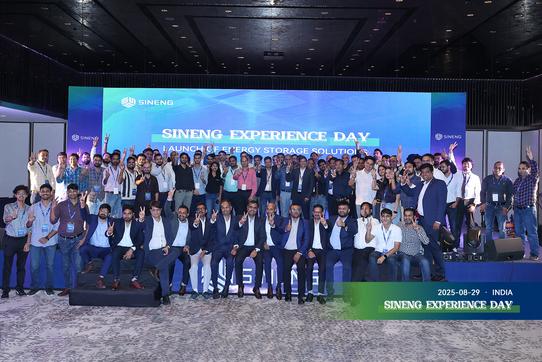
In a keynote address delivered online, Mr Wu Qiang, Chairman of Sineng Electric, highlighted, “For eight years, Sineng has been deeply engaged in India’s solar sector, establishing local manufacturing facilities and comprehensive service networks. Today, we are taking another decisive step forward empowering our customers with advanced, efficient, and reliable solar storage
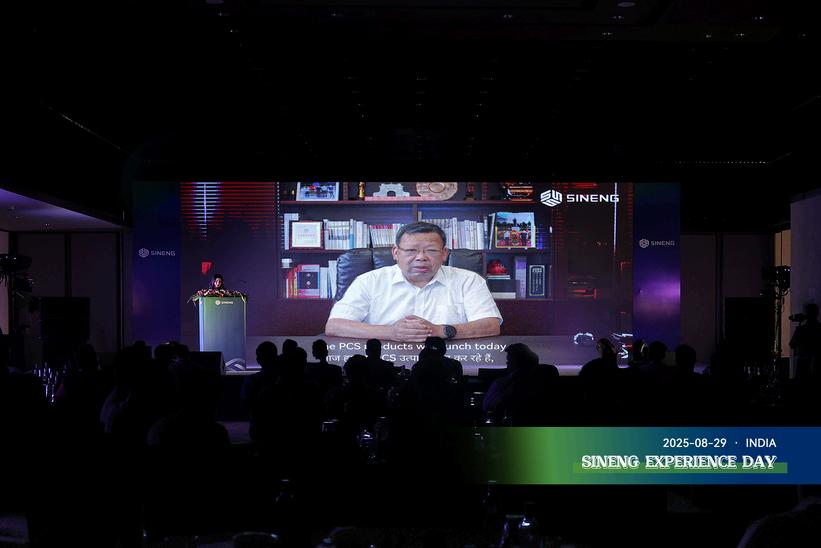
At the event, Sineng introduced its latest portfolio of energy storage solutions, spanning both central and string PCS technologies Equipped with the next-generation enhanced hybrid grid-forming technology, the products are fully tailored to India’s outdoor environment and grid conditions With

outstanding stability and adaptability under extreme heat, dust, and grid fluctuations, the solutions ensure safe and reliable system operation
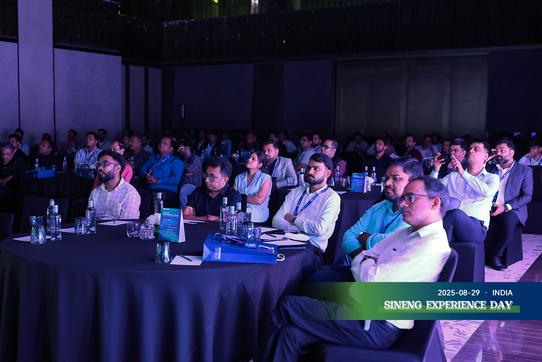
Guided by its philosophy of “global vision, local commitment,” Sineng continues to integrate global technological expertise with regional market insights to deliver highly customized smart energy solutions Through localized manufacturing, operations, and service, Sineng has built a foundation of trust with its partners, aiming to co-create a sustainable energy ecosystem
Global expansion remains one of Sineng’s core strategies, with India as a key hub in its overseas layout By turning India’s proven practices into replicable models, Sineng Electric is poised to generate value across markets in Asia-Pacific, the Middle East & Africa, Europe, and the Americas working hand in hand with global partners to build a brighter, greener energy future
About Sineng
Sineng Electric is the global leading supplier of a comprehensive product portfolio including PV inverters, energy storage inverters, and digital power products By establishing four R&D centers and leveraging top-notch resources, Sineng's unwavering commitment to technological innovation has enabled more people to access cost-effective, reliable, and sustainable energy Known for the engineering excellence, rigorous testing standards, and consistent quality, Sineng has earned recognition as a BloombergNEF tier 1 PV inverter maker and ranks No 4 in global PV inverter shipments for 2024
SUCCESS STORY

BreakingNewGround:PurshotamProfiles DeliversRecordPerformanceinIndia'sSolar Surge
Purshotam Profiles Pvt Ltd has shattered its own ambitious projections for 2024-25, delivering a remarkable 15 6 GW of module mounting structures (MMS) supply while generating revenues of ₹2,582 crores. The company has also supplied tracker structures for projects totaling 3 GW These figures represent a stunning 56% leap beyond their initial 10 GW target, positioning the company as a standout performer in India's rapidly expanding solar landscape
Exceeding All Expectations
The achievement becomes even more significant when viewed against the backdrop of India's solar revolution. The 15.6 GW contribution translates to clean energy capacity capable of powering approximately 12 5 million homes, demonstrating how Purshotam Profiles has become an integral enabler of the nation's renewable energy transition
With manufacturing capacity exceeding 40,000 metric tons per month and a cumulative portfolio of 56+ GW, the company has proven its ability to scale operations without compromising on quality standards that have made it a trusted partner for leading Solar EPC players nationwide
Strategic Geographic Expansion
Building on their existing network of 15 manufacturing units across Ahmedabad, Ghaziabad, Maharashtra, Rajasthan, and Hyderabad, Purshotam Profiles has expanded into South India with a new facility in Bellary, Karnataka This strategic move optimizes logistics for southern projects while tapping into the region's growing solar market.
Financial Milestones and Market Impact
The revenue milestone of ₹2,582 crores reflects exceptional business performance during a period of unprecedented growth in India's solar sector. This financial success comes as the industry focuses increasingly on domestic manufacturing capabilities and supply chain resilience, areas where Purshotam Profiles has consistently demonstrated leadership.
Beyond manufacturing excellence, Purshotam Profiles has been gaining significant traction as a power producer, marking its evolution from a component supplier to an integrated solar energy company. This strategic diversification demonstrates the company's commitment to participating across the entire solar value chain

Industry Leadership and Future Readiness
Purshotam Profiles' 2024-25 performance has earned recognition from major developers and EPC contractors who view the company as a reliable backbone for India's solar ambitions. Their consistent ability to exceed targets while maintaining manufacturing excellence has set new benchmarks for the MMS sector
As India pursues its target of 500 GW renewable energy capacity by 2030, companies like Purshotam Profiles represent essential enablers of this transformation Their proven track record of surpassing ambitious goals, combined with strategic expansion and robust financial performance, positions them exceptionally well for future opportunities.
New Standards
Looking ahead, Purshotam Profiles has set ambitious visions across multiple fronts: achieving 1 GW capacity as a power producer (having already reached 500 MW), expanding tracker structure supply to 7 GW, reaching 4 5 lakh MT in MMS supply, and establishing manufacturing capabilities for solar panels The company's transformation from a manufacturing-focused enterprise to a comprehensive solar energy solutions provider demonstrates its commitment to vertical integration across the entire solar value chain
This multi-pronged strategic approach represents more than business diversification it demonstrates Purshotam Profiles' confidence in delivering end-to-end solar solutions while contributing directly to India's renewable energy targets through manufacturing excellence, innovative tracking solutions, and clean power generation

PRODUCT FEATURE

NovasysLynxSeries:HalfcutN-TypeTOPCon ModulesDelivering570–650WpReliability
The Lynx Series introduces the next generation of high-performance solar modules, engineered with advanced Halfcut N-Type TOPCon cell architecture With power outputs ranging from 570 Wp to 650 Wp, these modules deliver superior efficiency, reliability, and long-term energy generation. Developed for utility-scale projects, commercial installations, and high-demand rooftop applications, the Lynx Series combines cutting-edge technology with durable construction and strong warranties to maximize value for stakeholders.
Novasys Greenergy—Trusted CleanEnergy Advocate
Backed by the expertise of Novasys Greenergy, the Lynx Series carries forward a strong legacy of quality and innovation. Novasys, a family-owned solar pioneer based in Nagpur, India, operates a 600 MW state-of-the-art module facility with advanced German automation Specializing in Mono PERC, Bifacial, Half-cut, and TOPCon technologies, it delivers high-efficiency, durable modules across diverse markets With a focus on quality, sustainability, and innovation, Novasys stands as a trusted clean-energy advocate
Introduction
The solar industry requires solutions that offer high performance and long-term dependability. The Lynx Series addresses this demand through advanced N-Type TOPCon technology, a robust design, and a focus on installation flexibility Supported by comprehensive warranties and third-party insurance, the Lynx Series provides not only superior technical results but also enhanced bankability for investors and developers
Key Technical Features
Minimized Light-Induced Degradation (LID): N-Type TOPCon cells minimize performance loss, ensuring stable energy output from day one
Superior Efficiency: Optimized module design delivers high conversion efficiency, maximizing energy harvest per square meter, reducing BOS costs, and improving project returns.
Quick Installation: Lightweight yet robust, the Lynx Series is compatible with standard mounting systems, enabling faster and cost-effective deployment
Durability: Designed to withstand high wind loads, heavy snow, and temperature fluctuations Anti-reflective glass and durable encapsulation provide long-term protection in harsh conditions

Performance Warranty: A comprehensive warranty ensures dependable energy generation and long-term value
Warranty Insurance by Ariel Re: Third-party reinsurance enhances confidence, bankability, and investor security
Applications
Utility-Scale Projects: High output and efficiency reduce BOS costs
Commercial Installations: Reliable and consistent energy delivery for large facilities
Rooftop Applications: Flexible, lightweight design suitable for diverse infrastructure
Strategic Value Proposition
The Lynx Series offers a complete solution for modern solar projects by combining efficiency, durability, ease of installation, and financial safeguards. It ensures reliable energy output, stronger project economics, reduced risk, and alignment with long-term clean energy goals
With power ratings of 570 Wp to 650 Wp and advanced Halfcut NType TOPCon technology, the Lynx Series sets a new benchmark in solar performance By delivering consistent yields, reducing operational risks, and ensuring strong project bankability, it provides a future-ready solution for developers, businesses, and infrastructure stakeholders


PRODUCT FEATURE

Together: PV + BESS = Smarter Energy’ with PowerEasy –an Optimal Solution for PV & Storage.
SOFAR, a global leader in solar PV inverters and energy storage solutions, showcased its vision for the future of clean energy at the Renewable Energy Expo 2025. Embracing the theme “Together: PV + BESS = Smarter Energy,” SOFAR unveiled its PowerEasy solution, designed to empower households, businesses, and communities with greater energy independence, reliability, and sustainability By integrating solar generation with advanced storage, SOFAR is setting new benchmarks in shaping India’s energy transition
Flexible Options for Every Need
The PowerEasy solution comes in both Single-Phase and ThreePhase configurations to suit diverse applications:
Single-Phase: 3–8 kW, ideal for residential and small commercial rooftops
Three-Phase: 5–20 kW, designed for residential, commercial, and industrial scenarios
This flexibility allows installers and EPCs to select the right system capacity based on site requirements, energy demand, and future scalability, making solar adoption simpler and more efficient
Key Features & Advantages
Seamless PV + Storage Integration: PowerEasy intelligently manages solar generation and battery storage to maximize energy use and reduce dependence on the grid
High Efficiency & Reliability: Optimized inverter performance ensures minimal energy losses, even in challenging operating conditions
Smart Monitoring & Control: Integrated digital platforms enable real-time system monitoring, remote troubleshooting, and performance analytics
Safety & Compliance: Built to meet global standards with advanced protection features, including IP66 rating and AFCI, ensuring long-term reliability
Scalable & Future-Ready: Modular design supports capacity expansion and integration with additional BESS units for evolving energy needs
At the forefront of SOFAR’s display is the 1–5 kW residential inverter range with 20 Amps input, engineered to address the rapidly growing demand for rooftop solar solutions in India Designed with efficiency, reliability, and user convenience in mind, this range represents a significant leap in enabling households to adopt clean and affordable energy.

Capacity Range: 1–5 kW: Ideal for small and medium-sized residential rooftop systems
20 Amps Input – Ensuring compatibility with modern high-power PV modules
High Conversion Efficiency – Optimized to maximize solar yield and reduce power costs
Smart Monitoring – Seamless integration with SOFAR’s digital platforms for remote performance tracking and management.
Robust Protection – IP65 protection, AFCI, and other advanced safety features for reliable long-term operation in Indian conditions.
Speaking on the company’s participation, Mr Zhong Qizheng, Senior Vice President (Global Sales & Marketing) at SOFAR, said:
“India’s residential solar market is expanding rapidly, and SOFAR is committed to empowering households with technology that delivers not just energy savings but also energy independence Our new 1–5 kW residential range with 20 Amps is designed to meet evolving customer needs, while supporting India’s clean energy ambitions ”
“By H1 2025, SOFAR shipment to India has reached over 5.5 GW+. We’re pleased to provide our innovative solutions for different EPCs, IPPs, and C&I.”
“In the future, we’ll keep working on technological innovation and service optimization, further expanding our business layout to satisfy the demands of localized service support in India ”
SOFAR invites attendees to visit Booth No. R450 Hall No. 12 at Renewable Energy Expo 2025 to explore its latest innovations and discover how SOFAR is enabling a sustainable energy future
About SOFAR
SOFAR is a global leading provider of solar PV and energy storage solutions and is committed to being the leader of digital energy solutions with a comprehensive portfolio, including PV inverters, hybrid inverters, battery storage systems, central energy storage, and smart energy management solutions for residential, C&I, and utilityscale applications By the end of 2024, SOFAR had not only been awarded the "Top PV Brand" by EUPD Research for consecutive years, but also achieved remarkable global reach: it had shipped over 37 GW of inverters to more than 100 countries and regions around the world
Learn more: https://www.sofarsolar.com/.
COMPANY FEATURE
SunoraSolar:D andInnovation inIndia’sRenewableEnergySector

As India accelerates its clean energy transition, Sunora Solar, the flagship company of Unique Sun Power Pvt. Ltd., has positioned itself as a key player in the solar industry Founded by Piyush R Variya, Mayur K Vastarpara, and Ridham Patel, the company has established a strong reputation for premium quality, customer satisfaction, and continuous improvement
Expanding Capabilities and Solutions
Sunora Solar focuses on delivering reliable, affordable, and highquality solar solutions designed to lower the Levelized Cost of Energy (LCOE), reduce payback periods, and perform effectively under diverse conditions, including low light.
The company currently operates with a 2 GW module manufacturing capacity, supported by its portfolio of on-grid and hybrid inverters, and has firm plans to enter Battery Energy Storage System (BESS) manufacturing Its integrated solutions spanning panels, batteries, and inverters serve residential, commercial, and agricultural markets, complemented by supplies of solar cells, frames, and back sheets
Mission and Growth Path
With a mission to make the planet greener and cleaner, Sunora Solar aligns its operations with the broader goal of environmental preservation and improved quality of life for present and future generations
Its rapid growth trajectory is reflected in a series of milestones:
2016: Establishment of a Unique Group
2017: MNRE-approved vendor; completed 500 kW+ projects
2018: GEDA approval; achieved 1 MW+ projects
2019: Empaneled under the Surya Gujarat Scheme; completed 5 MW+ projects
2020: Sunora PV Module launched; awarded EPC Company of the Year
2021: Crossed 12 MW+ projects; retained EPC Company of the Year title
2022: PV module manufacturing facility inaugurated in Surat with 200 MW capacity
2023: Supplied 40+ MW solar modules; developed solar parks
2024: Introduced TOPCon solar panels; expanded capacity to 800 MW
2025: Scaled up to 2 GW capacity; launched BESS product line 2026 (Planned): Targeting 3 GW module and 2 GW solar cell capacity

Technology and Innovation
Under the leadership of Ridham Patel, the company is strengthening its competitive edge through investments in R&D and AI-driven automation systems These technologies enhance precision, reliability, and efficiency in manufacturing, ensuring Sunora Solar remains ahead in a rapidly evolving market
Branding and Market Outreach
Beyond manufacturing, Sunora Solar has distinguished itself through innovative branding initiatives.
In January 2025, it launched a brand mascot representing smart, clean energy solutions
During Ganesh Chaturthi 2025, the company introduced the “Go Green Ganesha Solar Mobility Van”, featuring an eco-friendly idol made from solar cells an initiative that combined cultural relevance with sustainability messaging
Community and Sports Engagement
Sunora Solar also invests in broader social engagement The company sponsors Pro Kabaddi League (PKL) teams including U Mumba and Jaipur, promoting sports culture while raising awareness about renewable energy and conservation of natural resources
Looking Ahead
With its clear vision “to educate and empower everyone to harness solar energy more efficiently, making it cleaner, more reliable, and accessible for all”, Sunora Solar continues to align growth with innovation.
By expanding its capacity, investing in advanced technology, and pursuing integrated solutions, the company is set to play an increasingly critical role in India’s renewable energy journey
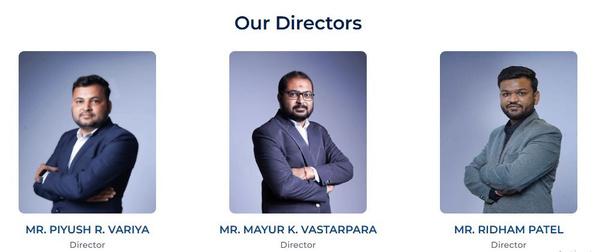


COMPANY FEATURE
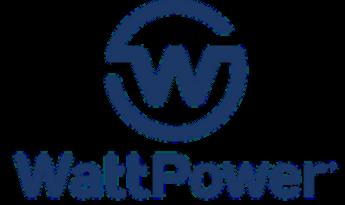
WattPower’s18GWMilestone:ATestament toIndianInnovationandExecution
WattPower is emerging as a leading force in India’s solar industry, combining innovative engineering with a commitment to long-term reliability Founded in 2022 under the leadership of Divya Prakash Choraria, the company was built on a simple yet powerful insight: while inverters represent only a small portion of a solar plant’s cost, their performance determines the efficiency and longevity of the entire system From the outset, WattPower has focused on delivering products tailored to Indian conditions and engineered for operational excellence
The Chennai facility is designed with scalability in mind, currently supporting 9 9 GW of annual production with the capability to scale up in line with accelerating market needs. Rigorous testing and quality controls at every stage ensure consistent product performance, helping the brand maintain a strong reputation for reliability The company invests continuously in its processes, quality systems, and engineering capabilities, and its growth has been both deliberate and rapid
To date, WattPower has supplied more than 18GW of inverters, partnering with some of India’s leading renewable energy developers, including Adani Green Energy, Avaada, MEIL etc This demonstrates the company’s ability to deliver at scale across diverse terrains and challenging environments, with an even larger operational base under management
WattPower’s products are designed for lifecycle value rather than upfront cost alone. Inverters incorporate advanced fault isolation, temperature monitoring, and adaptive cooling systems to maintain
performance even under demanding conditions Proprietary algorithms optimize energy yield across a range of field scenarios, while grid compliance capabilities ensure seamless integration with India’s transmission infrastructure This combination of reliability, innovation, and adaptability differentiates WattPower in a highly competitive market.
Sustainability and responsible practices are integral to the company’s philosophy The company implements robust e-waste management policies, ensuring end-of-life components are handled responsibly in partnership with certified recyclers This reflects the company’s commitment to clean energy solutions across the full value chain
Looking ahead, WattPower envisions a future where solar generation becomes increasingly intelligent, integrated, and hybrid As storage solutions mature and hybrid renewable projects expand, the company develops systems that integrate seamlessly with storage and smart grid networks Its long-term strategy includes leveraging AI, IoT, and predictive analytics to support autonomous, digitally managed solar plants that deliver maximum efficiency and reliability
In less than three years, WattPower demonstrates how an Indian company can combine engineering rigor, manufacturing excellence, and deep client trust to build a scalable, sustainable business. Its journey reflects the maturity of India’s solar sector and offers a blueprint for how innovation and operational discipline accelerate the country’s transition to clean energy



At WattPower, we believe an inverter’s performance defines the efficiency of the solar system. Our focus is on engineering solutions for Indian conditions, ensuring long-term reliability and energy yield."
COMPANY FEATURE

KSolare:MadeinIndia,Poweringthe FutureofRenewableEnergy
India’s clean energy transition is accelerating at an unprecedented pace, driven by the twin forces of solar adoption and electric mobility At the heart of this shift lies the need for reliable, efficient, and future-ready inverter and EV charging solutions KSolare Energy Pvt. Ltd., headquartered in Pune, has positioned itself as one of India’s fastest-growing homegrown manufacturers delivering exactly that high-efficiency solar inverters, hybrid energy solutions, and EV charging systems designed for Indian conditions.
Engineering Meets Indian Realities
KSolare brings the precision of German engineering together with the resilience required for India’s diverse climate and grid challenges From scorching desert heat to humid coasts, KSolare inverters are built to perform where many imported alternatives struggle With daily production capacity of up to 2000 units and a strong R&D foundation, the company is scaling rapidly to meet national demand
Product Portfolio
KSolare’s portfolio ranges from residential rooftop solutions to largescale industrial deployments. Its 5G Pro and Pro+ Series serve residential and SME customers, offering efficiencies up to 99 5%, low start-up voltages, and IP65 protection For larger projects, the 5G Mega+ and Mega HV three-phase systems deliver capacities up to 360 kW, with multiple MPPTs, arc-fault detection, and advanced antiPID protection The 7G Infinity Series represents its next-generation platform, while hybrid inverters and EV chargers ensure readiness for a clean mobility future.
Why KSolare Stands Out
Efficiency and Reliability: Up to 99 5% conversion efficiency with multi-MPPT design.
Rugged Performance: IP65/IP66 enclosures and dynamic heat management
Smart Features: Arc-fault detection, IV curve diagnosis, and grid support.
Future Ready: Hybrid and EV-compatible models to integrate solar, storage, and mobility
Beyond technology, what sets KSolare apart is its focus on service With streamlined warranty support, trained service teams, and customer-first policies, the company ensures peace of mind for installers and end-users alike.

Driving India’s Energy Independence
In just over a decade, KSolare claims to have powered more than five million customers, contributing significantly to reducing carbon footprints while promoting energy independence By championing 100% Make in India manufacturing, the company not only supports national climate goals but also strengthens the domestic renewable energy ecosystem
Looking Ahead
With the renewable energy sector evolving rapidly, KSolare is already preparing for the next wave of innovations. AI- and IoTenabled diagnostics, smarter hybrid systems, and expanded EV charging infrastructure are on the roadmap, ensuring the company remains a step ahead
As India targets ambitious renewable energy milestones, homegrown innovators like KSolare will play a defining role By combining advanced technology with local manufacturing and service, KSolare is more than just a product supplier it is a partner in powering a sustainable, electrified future
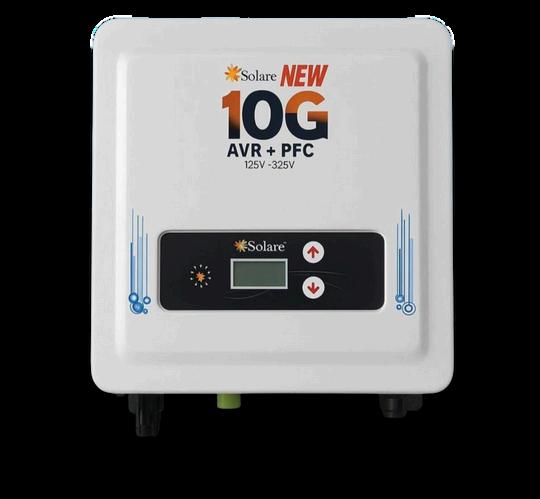
EXPERT SPOTLIGHTS
ChairmanandManagingDirector KPIGreenEnergy
DR. FARUK G PATEL, DrivingIndia’sRenewableGrowthThrough SolarWindHybridandStorageExpansion
KEY HIGHLIGHTS:
Strong momentum in solar, wind, and hybrid renewable energy projects
Policy stability and innovation seen as drivers of long-term growth
Expanding global footprint with focus on green hydrogen and storage.
How do you view India’s solar and renewable energy sector, and what qualities are critical to sustain momentum?
India’s renewable energy journey is not just a sectoral growth story; it is a national as well as international movement From humble beginnings, we have reached a point where solar, wind, and hybrid solutions are central to our energy mix The momentum is strong, but sustaining it requires more than technology and capital
True leadership today demands vision, resilience, and inclusivity Vision to see beyond quarterly targets, resilience to navigate policy and market fluctuations, and inclusivity to ensure that communities, employees, and partners grow alongside businesses A leader must act not just as a CEO, but as a custodian of India’s clean energy future Aligning to this, when we were just at meagre installation capacity of a few hundred MWs, a couple of years ago, we took the humongous challenge to scale out installed capacity to 10 GW by 2030
With competition in renewables, what strategies should leaders adopt to balance sustainability?
Competition is healthy; it pushes us to innovate and deliver better solutions But in renewables, the real differentiator is not just speed, it is sustainable scale Leaders must focus on three things:
Integration: Building across the value chain from generation to storage and transmission to optimize costs and efficiency.
Innovation: Embracing digitalization, AI, and predictive technologies to extract more value from every unit of renewable power
Impact: Ensuring profitability does not come at the cost of people or the planet. And as I always say that a business that serves society and the coming generations will always find long-term profitability In short, growth with conscience is the only growth that lasts.

India has set 203 How can busine strategies to me goals?
India’s 2030 renewable ener ambitious and inspiring To ali must think nationally but act globally As KP Group is not just ready to scale to 10GW by 2030 by expanding its execution in various states, but we are also expanding our global footprint And to do so, one will have to focus on:

Partnerships: Collaborating with global players to bring best practices, while also nurturing domestic manufacturing and RCD Expansion: Expanding the footprints in the field of green hydrogen, BSS, and floating solar C offshore
Localization: Reducing dependence on imports by investing in “Make in India” solutions that are cost-competitive and world-class.
Talent Building: Developing the next generation of green leaders through skill development and technical education
If businesses integrate India’s national goals into their corporate DNA, they won’t just be meeting targets they will be shaping global competitiveness, and I am happy that KP Group is checking all the marks in the above-stated pointers.
What role do policy and regulation play in shaping investor confidence in India’s renewable energy market?
Policy is the backbone of investor confidence. When frameworks are stable, transparent, and forward-looking, capital flows naturally Investors look for predictability in tariffs, land policies, grid access, and compliance
India has taken significant strides, but we must go further by ensuring long-term clarity in hybrid projects, storage policies, offshore policies, and green hydrogen incentives. A consistent policy environment does not just attract investors; it accelerates execution and creates a foundation for innovation
g storage are gaining traction. How will they reshape the market over the next decade?
Hybrids are the future because nature itself is a hybrid. The sun shines by day, the wind blows strongest by night or season, and storage bridges the gaps Together, they create a nearround-the-clock green power ecosystem
In the coming years, hybrid projects will not be a niche; they will be the norm They will drive down costs, stabilize grid supply, and open doors for large-scale industrial decarbonization Hence, at KP Group, we are not just focusing on building Hybrid projects but have also done MoUs to bring in more sustainable storage capabilities for better synergy For I see that these projects will give India a competitive edge globally by ensuring reliable, dispatchable green energy for both domestic consumption and exports, like green hydrogen
With bifacial modules, AI energy forecasting, and utility-scale storage, which technologies will be true game-changers for India’s solar sector? Q Q
Technology is the multiplier of vision Bifacial modules will increase yield without requiring extra land, a crucial advantage for India. AIbased forecasting will transform how we plan, dispatch, and trade power in real-time And large-scale storage will finally solve the intermittency challenge, unlocking the full potential of renewables.
But beyond individual technologies, the true game-changer is integration. When solar, wind, storage, digitalization, and policy all come together, India will leapfrog into a clean energy superpower
DHARMENDRA JAIN
DrivingIndia’sCleanEnergyFuture withSolarGrowthandInnovativeC&I Solutions
KEY HIGHLIGHTS:
India’s solar PV market evolving with policy, technology, and financing innovations
C&I solar adoption reduces costs, emissions, and eases grid pressure.
Emerging business models accelerate renewable adoption among medium and large enterprises
How do you see the Indian solar PV market evolving over the next five years, particularly in terms of policy, technology, and financing trends?
At HFM Solar Power, we see the next five years as decisive for India’s solar PV sector Our nation has set ambitious renewable energy milestones, and we believe solar will remain at the heart of this transition Below we share our perspective on market evolution, leadership, challenges, and opportunities, particularly in the commercial and industrial (C&I) space
The Next Five Years: Policy, Technology, and Financing
Policy: The government is pushing aggressively on renewable capacity, but the focus is shifting from just targets to system stability and domestic strength We expect more consistent support for hybrid and storage projects, incentives for local manufacturing, and better coordination between central and state regulations Clearer open-access and netmetering rules will be vital for reducing uncertainty
Technology: The sector will see a move from pure solar to solar-plus-storage solutions Digital operations smart inverters, predictive O&M, and integrated energy management will ensure higher reliability Rooftop and distributed solar will grow rapidly, while integration with EV charging and microgrids will become mainstream.

Financing: Access to affordable capital will remain the most decisive factor. Over the next five years, we expect blended finance models, green bonds, and participation from institutional investors to expand Structured guarantees and pooled project financing will help make projects bankable, especially for SMEs and mid-sized corporates
QWhat leadership qualities do you believe are most critical for navigating the challenges and opportunities in India’s rapidly growing renewable energy sector?
At HFM, we believe effective leadership in renewables requires:
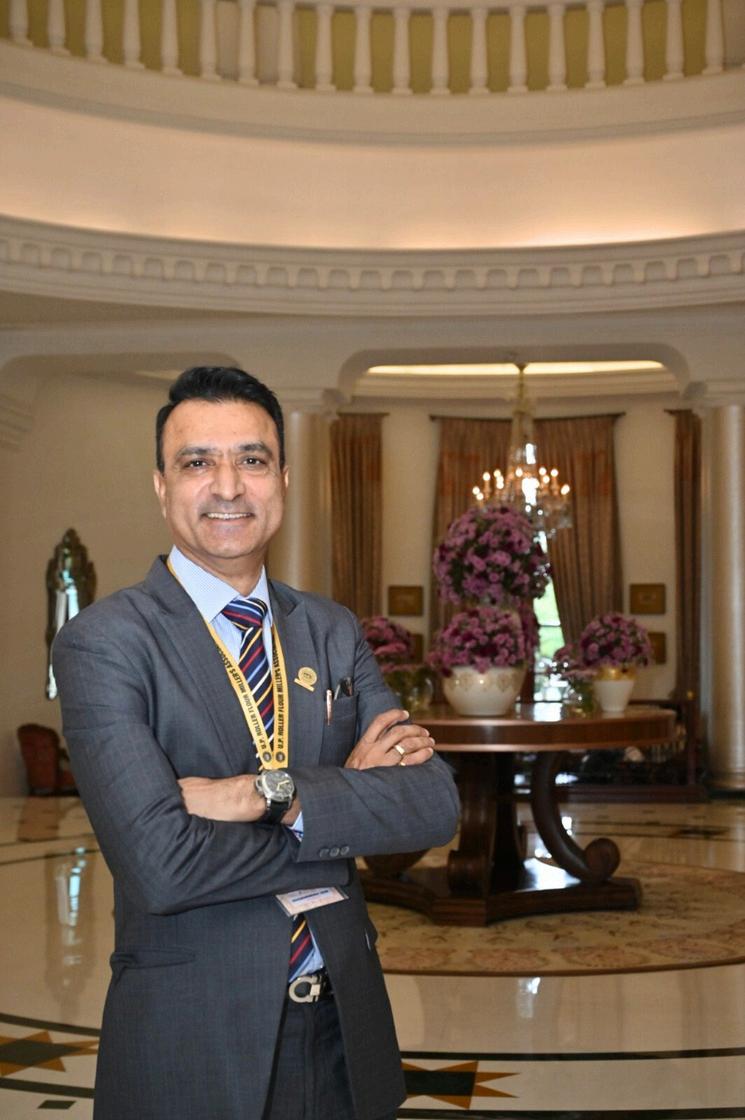
Vision beyond MWs: A focus not just on capacity, but on lifecycle value, community impact, and system reliability
Regulatory agility: Deep understanding of state-wise rules and the ability to anticipate policy shifts
Financial and risk skills: Structuring bankable projects that balance curtailment, transmission, and offtake risks
Operational discipline: Delivering projects on time, with strong O&M to sustain long-term output
Stakeholder management: Engaging regulators, communities, and customers with transparency and trust.
Innovative mindset: Willingness to experiment with new models such as hybrid PPAs, storage services, and green leasing
QWith India targeting ambitious renewable energy milestones, what market challenges such as grid integration, land availability, or financing do you consider the most pressing today?
Today’s Most Pressing Challenges
From our vantage point, three challenges stand out:
Grid Integration: Many fully built projects face curtailment or delays due to limited transmission capacity Without timely evacuation infrastructure, even the best projects cannot perform.
Cost of Capital: High interest rates and shorter debt tenors make solar projects more expensive Unlocking affordable, long-term financing is critical
Land and Regulatory Hurdles: Utility-scale projects face delays due to land acquisition and permits, while rooftop and C&I projects are slowed by fragmented policies across states
Alongside these, the financial health of DISCOMs and shifting tariff structures also create uncertainty For us, solving grid access and financing risk remain the top priorities
EXPERT SPOTLIGHTS
QHow can commercial and industrial (C&I) solar play a transformative role in reducing India’s dependence on conventional energy sources?
India’s commercial and industrial sector consumes a significant share of electricity, often at high tariffs C&I solar can therefore be a game-changer:
The Transformative Role of C&I Solar
Demand displacement: Large, predictable industrial loads can directly reduce reliance on thermal and diesel power
Grid relief: On-site solar plus storage can shave peaks and reduce demand pressure on the grid.
Corporate decarbonization: With ESG and net-zero goals, enterprises are driving renewable procurement, creating bankable demand.
Innovation hub: C&I adoption allows faster deployment of hybrid solutions, demand response, and EV charging integration.
By enabling businesses to cut costs and emissions simultaneously, C&I solar accelerates India’s clean-energy independence.
QWhat are the emerging business models in the Indian C&I solar space that can accelerate adoption among medium and large enterprises?
Emerging Business Models in the C&I Segment
HFM Solar Power sees several models gaining traction:
Third-Party PPA (OPEX model): Developers own and operate plants; customers enjoy low-cost power without upfront capex
Open Access and Virtual Net Metering: Off-site generation wheeled to facilities or shared across multiple sites

Solar+Storage as a Service: Guaranteed reliable supply with firm capacity, reducing diesel dependence
Leasing and Shared Assets: Especially for SME clusters, where individual capex is limited
Green Financing & Bundling: Portfolios of projects pooled into green bonds or ESG-linked debt, reducing risk and attracting institutional investors.
Integrated Energy Services: Solar bundled with efficiency, EV charging, and digital energy management
These models lower barriers for enterprises and accelerate adoption
QAs a leader in the solar sector, what advice would you give to upcoming entrepreneurs and businesses looking to enter India’s renewable energy market?
Advice to Entrepreneurs Entering the Renewable Market
Our journey has taught us valuable lessons we share with new entrants:
Choose your niche carefully: Differentiate by focusing on a sector, region, or solution where you can build deep expertise
De-risk early: Secure land, permits, and bankable EPC partners before scaling Use creditworthy offtakers to strengthen financial models
Structure finance smartly: Explore blended capital, guarantees, and partnerships with green funds to reduce cost of capital
Invest in performance: Long-term O&M, warranties, and digital monitoring safeguard both customer trust and profitability
Build relationships: Engage proactively with regulators, DISCOMs, and local communities trust and goodwill are invaluable
Stay nimble: Track policy and technology shifts Be ready to adapt business models quickly
Think scale: Standardize procurement and monitoring across projects to lower costs and build a strong track record
Conclusion
India’s solar sector is at an inflection point With ambitious national targets, evolving policies, and growing corporate demand, the opportunity is immense But challenges particularly in transmission, financing, and regulatory clarity must be addressed with discipline and innovation

At HFM Solar Power Ltd, we are committed to driving this transition with a focus on reliable execution, customer-centric business models, and sustainable growth For entrepreneurs and partners, the message is clear: India’s renewable future is not just about megawatts installed, but about building resilient, bankable, and transformative energy solutions
EXPERT SPOTLIGHTS
PRATYUSH THAKUR
IndiaCountryHead
BlueleafEnergy
DrivingGrowthinIndia’sSolar,Hybrid,
andStorageEnergyMarket
KEY HIGHLIGHTS:
Focus on large-scale utility, hybrid, storage-linked, and floating solar projects across high-potential states.
Innovative business models like “attributes-plus-floor” and integration of BESS to enhance project viability
Strategic partnerships and technology adoption to accelerate renewable deployment and ensure grid stability
How is Blueleaf Energy positioning itself to capture growth in India’s rapidly expanding solar PV market?
At Blueleaf Energy we are prioritizing largescale utility projects while diversifying our portfolio to include storage solutions Our strategy includes deepening our presence in both traditional and emerging solar rich regions Our expertise in solar power is reflected through our 1 GW portfolio of solar projects under-construction in Rajasthan Our Rajasthan Solar Portfolio is on track to be commissioned next year We are currently focusing more on bringing wind and solar hybrid projects into our pipeline. We are also closely monitoring policy shifts and assessing grid stability and energy storage needs By aligning ourselves with both India’s renewable energy goals and evolving technologies, Blueleaf aims to play a key role in the country’s energy transition
Which regions or states in India do you see as most promising for large-scale solar deployment in 2025?
Geographically, the highest generating region of India is the Western part, especially Rajasthan. Along with that several other states like Gujarat, Madhya Pradesh, Maharashtra and Karnataka also enjoy superior solar power generation potential Other factors in deciding the locations are state regulations, grid robustness, ease of

land acquisition and construction costs, which impact on our returns. Our focus will continue to be on these high-potential regions, while also exploring emerging opportunities. We are actively pursuing acquisition and partnership opportunities to fast-track our growth

QHow are evolving government policies and incentives impacting your market strategy and project planning?
India presents a significant growth opportunity in the renewable energy sector, driven by strong demand, favorable solar and wind resources, and a government target of 500 GW of new solar capacity by 2030 Unlike some other markets focused on greening existing capacity, India is adding new capacity to meet increasing energy needs This is a strong draw for attracting international capital into India
In June of this year the government launched the second phase of VGF, viability gap funding which basically provides partial funding for projects to improve their financial viability This is applicable for battery storage projects powered by renewable energy. While we are exploring and participating in standalone battery energy storage (BESS) projects, we are also keen to integrate BESS into our existing solar, wind and hybrid projects
Waiver of Interstate Transmission System (ISTS) transmission charges has also been a key enabler for accelerating renewables deployment With these incentives gradually being reduced, we are looking at project development at the State Transmission Utility (STU) level, in states where grids are strong and off takers have solid credit histories
Another important policy development is the continual changes in the Deviation and Settlement Mechanism regulations The recent Central Electricity Regulatory Commission (CERC) changes to the deviation and settlement mechanism unfairly shift the burden of grid balancing onto project developers, who have limited control over variable generation and frequency conditions By moving towards scheduled generation as the denominator and phasing out preferential treatment, the regulations amplify penalties without recognizing the inherent uncertainty of renewables Grid operators, with their system-wide visibility and balancing tools, are far better placed to manage deviations efficiently. Pushing this responsibility to developers, risks discouraging investment and undermining India’s renewable energy targets

EXPERT SPOTLIGHTS
QWhat innovative business models or financing solutions is Blueleaf Energy using to accelerate solar adoption?
Blueleaf has been at the forefront of innovation in business models to accelerate solar adoption. Our first project, the 300 MWp Pachora Hybrid Power Project under construction in Madhya Pradesh, is notable for its innovative offtake structure, which sets a potential merchant risk benchmark for the Indian renewables market. Here Blueleaf Energy has chosen to monetize the environmental attributes of the power generated through the sale of International Renewable Energy Credits (I-RECs) to a technology company, while simultaneously selling the physical power into the merchant market with a secured floor price This "attributes-plus-floor" model is likely a first for the Indian market and allows Blueleaf to maximize revenue streams from both the energy and environmental markets This approach also demonstrates a growing sophistication and confidence in the Indian banking sector, with local lenders like Axis Bank willing to underwrite complex project structures
We are now actively pursuing the opportunity to incorporate BESS into this project The addition of BESS will further improve the project’s generation profile, ultimately better supporting grid integration and strengthening project viability.
QHow does Blueleaf Energy plan to differentiate itself amid increasing competition from domestic and global solar developers?
Blueleaf Energy differentiates itself through a combination of high technical expertise, strong partnerships and making a positive social impact on the communities around our sites In terms of the technical aspect, we use only superior quality equipment which is selected after rigorous analysis Moreover, our Engineering and Business Development teams are always on the lookout for new and more efficient technologies as technology is not stagnant, but ever evolving For our large,
INDIA

utility-scale projects, we have already adopted technologies like robotic cleaning of solar modules. Our commitment to ensuring that projects are delivered on time and meet the highest quality standards, also helps us build strong, long-term relationships with our stakeholders
One of our key strengths is structuring highly effective and compelling partnerships. This reflects our belief that ‘going local’, or rather harnessing and leveraging the local knowledge of trusted local partners, can help us to deliver the best solutions In this spirit, earlier this year we embarked on a strategic partnership with Jakson Green to develop gigawattscale renewable energy projects in Rajasthan Blueleaf’s development and commercial capabilities combined with Jakson’s project execution strength has created a strong partnership for delivering high-quality renewable energy projects, propelling us towards our shared goal of adding 5 GW or more of renewable energy capacity to the Indian grid by 2030, to accelerate the nations journey to net zero
The current renewables market in India is severely constrained due to a lack of new grid availability for the next few years. However, the current allottees of grid capacity are looking for partners to jointly develop and construct projects We are actively pursuing opportunities to partner with current allottees and would like to structure several partnership projects to accelerate the deployment of solar and renewables across the country Competition is an important part of any market; however, we believe collaboration is the key to unlocking sustainable success
QCan you share your perspective on emerging trends in hybrid, storagelinked, and floating solar projects in India?
We see three distinct, yet interconnected, trends shaping the Indian market for these innovative solutions. The fundamental drivers are grid stability and the persistent challenge of land acquisition
In the hybrid space, the trend is moving firmly toward projects that can provide firm power and Round-The-Clock (RTC) delivery. Simple co-location of assets is no longer the endpoint Blueleaf Energy has direct experience here, exemplified by our 300 MWp Pachora Hybrid Power Project in Madhya Pradesh, where we are already looking at incorporating BESS to improve the generation profile and support grid integration. The emerging market trend is that hybridization is becoming less of a business model innovation and more of a policy-driven necessity for securing grid access and managing transmission
Regarding storage-linked projects, the emerging trend is driven by supportive policy The government's launch of Viability Gap Funding (VGF) for battery storage projects is the single biggest enabler, signaling the end of storage being a niche add-on and its emergence as a mainstream, investable segment This is driving a clear trend toward integrating BESS into existing solar, wind, and hybrid projects to maximize viability and align with grid requirements While Lithium-ion is dominant, we are actively monitoring innovative technologies like flow batteries and solid-state, which we expect to transition into the utility-scale market as costs decline
Finally, floating solar presents a significant, policy-backed emerging opportunity to overcome or even avoid land acquisition challenges India's vast water bodies offer a ready new frontier for gigawatt-scale development Although this segment is still maturing in India, we view it as a highpotential area we are well prepared to execute in Leveraging our significant international project development experience in floating solar gained from developing large-scale floating projects in the Philippines and Malaysia, we are ready to expand into this niche in India Here our focus will be on the states that provide clear policy frameworks for water-body utilization


EXPERT SPOTLIGHTS
DEBMALYA SEN
President IESA
ShapingIndia’sSolarFuture:Leadership InsightsonEnergyStorageandSustainable Growth
KEY HIGHLIGHTS:
Storage ensures grid stability, making solar expansion sustainable and economically viable in India.
Reskilling manpower and embracing rapid battery technology advances are key to scaling storage solutions
With utilities already adopting storage, emphasis now shifts to C&I sector adoption and effective implementation
QHow do you see energy storage shaping the next phase of leadership in India’s solar sector?
Storage helps solar to remain in the growth phase The growth of solar has been been resulted in increasing grid issues, which has been a challenge for grid operators Storage comes in there to solve the problem and thus makes solar growth more sustainable and viable The government at present has only issued an advisory to have 2 hrs if storage with solar I see that advisory becoming a norm without a mandate
QHow are you balancing technology innovation and cost efficiency to make storage more attractive for solar developers and investors?

The fact is storage is going through an innovation curve, which seldom a technology goes through; there's constant R&D going on, the cell sizes of 314 mA are progressing towards 528, to announcements happening of 1175 mA This is also resulting in cost reduction avenues, just imagine what could be stored in 2 20 ft containers is now coming in a single container All these factors are resulting in a cost drop, making bess more appealing to developers and consumers to embrace bess
Leadership in solar-storage adoption means reskilling talent today to unlock the full potential of tomorrow’s energy solutions.”
QEnergy storage is no longer optional for solar growth it is the key to a sustainab reliable energy future in
QWhat role does busi leadership play in d large-scale adoptio storage solutions in
It's necessary to reskill our man will be adept at delivering We that's not the issue, we have to to bess Batteries are not new, an them is no rocket science, i stro that investing in training development will prove benef long run and leaderships shou the same

How do you foresee policy and regulatory support influencing business strategies around solarstorage in India?
Policy and regulatory efforts have gone in much earlier, and this you see the result today, while fine-tuning is always happening, I believe we are set for expansion even without a new policy and regulation coming out. Let's just focus on implementation and execution in the coming days

hat is your long-term adership vision for tegrating storage with solar build a reliable, sustainable ergy future for India?
s have embraced BESS, it's now C&I sector to embrace it; a lot of oated in the market, but closure is Building awareness, sensitising e growth and economic potential ess model and ones to evolve is we at IESA are doing the same We happy to have this discussion with rs and help them go green








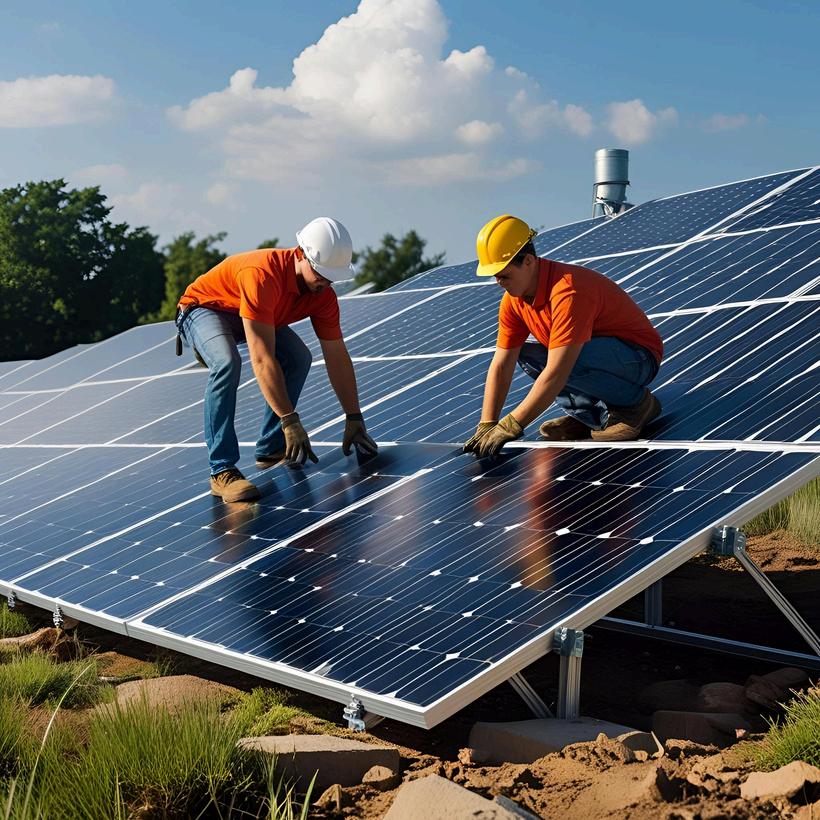


EXPERT SPOTLIGHTS
RATUL PURI
Chairman HindustanPower
India’sSolarFutureAndEmergingTrends InPVGrowth
KEY HIGHLIGHTS:
India added over 30 GW solar capacity in 2024, exceeding previous year’s growth. Rooftop, hybrid, and floating solar projects driving next phase of sector expansion Green bonds, innovative PPAs, and local manufacturing boosting investment and supply chain resilience.
QHow do you see the Indian solar PV market evolving over the next 3–5 years, especially in terms of capacity additions and emerging trends?
India’s solar photovoltaic (PV) sector is expanding at an unprecedented pace. Installed capacity has crossed 120 gigawatts (GW), with over 90 GW from ground-mounted projects, 20 GW from rooftop grid-connected systems and the rest from off-grid plants and other sources In 2024 alone, India added more than 30 GW, which was greater than double the capacity added the previous year With the government targeting 500 GW of non-fossil fuel capacity by 2030, annual additions of 35-45 GW of solar capacity will be essential to meet this goal
The next phase of growth will involve hybrid projects that combine solar and battery storage, floating solar and greater adoption of rooftop systems by households and businesses Policy moves such as the recent GST cut on modules and the expansion of domestic manufacturing under the Production Linked Incentive (PLI) scheme will also strengthen cost competitiveness and supply chain resilience
QWhat are the key challenges for solar project developers in India today, and how is Hindustan Power adapting its strategy to address them?
While the government has rolled out multiple policy initiatives and programmes, developers face challenges with land acquisition, transmission connectivity and upgradation of infrastructure These hurdles, though being addressed gradually, continue to affect the pace of project execution

At Hindustan Power, we address these issues by securing land well in advance, working closely with suppliers and partnering with both state utilities and local communities This proactive approach helps us mitigate risks that often slow down renewable energy projects. By strengthening collaboration and building resilient supply chains, we ensure that our projects are delivered on time and create lasting value for all stakeholders
QWith increasing competition and policy changes, what market opportunities do you see for domestic solar PV developers in India?
Opportunities are expanding on multiple fronts. Rooftop solar is expected to grow rapidly, with the Pradhan Mantri Surya Ghar Muft Bijli Yojana projected to double installations to more than four million households by 2026 Hybrid solar and battery storage projects are gaining momentum as utilities and corporate buyers increasingly seek round-the-clock renewable power.
On the manufacturing side, India’s solar module capacity has risen from about 38 GW to nearly 74 GW in FY 2024–25 With the mandate for locally made solar cells taking effect from June 2026, domestic manufacturing will play an even larger role A recent draft notification by the Central government on the use of locally manufactured ingots and wafers, effective from June 2028 onwards, is another step towards self-sustainability This approach will help build a resilient economy while advancing the country’s climate goals

How are you leveraging innovation, partnerships, or financing for India’s renewable sector?
Green bonds and sustainability-linked loans are bringing more international capital into India’s renewable energy sector and improving access to funds at competitive rates These instruments not only provide cheaper financing but also signal strong investor confidence in India’s clean energy transition. Moreover, the recent GST reduction on renewables has further lowered project costs, making clean energy investments more attractive
At the same time, Power Purchase Agreements (PPAs) are becoming more innovative in structure and scope Longer-term contracts that recognize the value of peak-hour supply, along with corporate PPAs that cater directly to business customers, are becoming increasingly common Such mechanisms are helping developers secure predictable cash flows while meeting the rising demand for reliable green power Storage-linked PPAs, in particular, reflect a trend toward agreements that reward reliability as well as capacity
QHow important is collaboration with utilities for scaling solar projects, and what trends are you observing?
Utilities and state agencies play a central role in enabling PPAs, land access and timely grid integration Technology partners contribute expertise in storage solutions, smart inverters and digital monitoring systems that make renewable power more reliable
A clear trend is the rise of multi-stakeholder projects that bring together government, private developers, financiers and technology providers.

MARKET RESEARCH
India Installs 25 GW Solar In Calendar Year 2025 By August
India has achieved a remarkable milestone in solar energy by installing 25 GW of solar PV capacity in the calendar year 2025, up to August This strong growth demonstrates the country’s continued commitment to renewable energy and its efforts to meet climate and energy goals. The pace of solar installations has been impressive, with every month from January to August witnessing more than 2 GW of solar PV capacity added, showing steady progress in expanding solar infrastructure across the country
Among the months, June recorded the highest addition of solar capacity, with 5 4 GW installed, highlighting the accelerating momentum of project execution during the mid-year period This surge reflects both the government’s supportive policies and the active participation of private developers in ramping up solar deployment
Rajasthan continues to lead as the top solar PV state in India The state’s cumulative installed capacity reached 33,163 29 MW by August 2025 Of this, a significant portion, 28,604 24 MW, comes from ground-mounted solar PV projects, while the remaining capacity is contributed by rooftop solar and off-grid solar installations Rajasthan’s leadership in solar development showcases the state’s favorable policies, abundant solar resources, and strong project implementation capabilities.
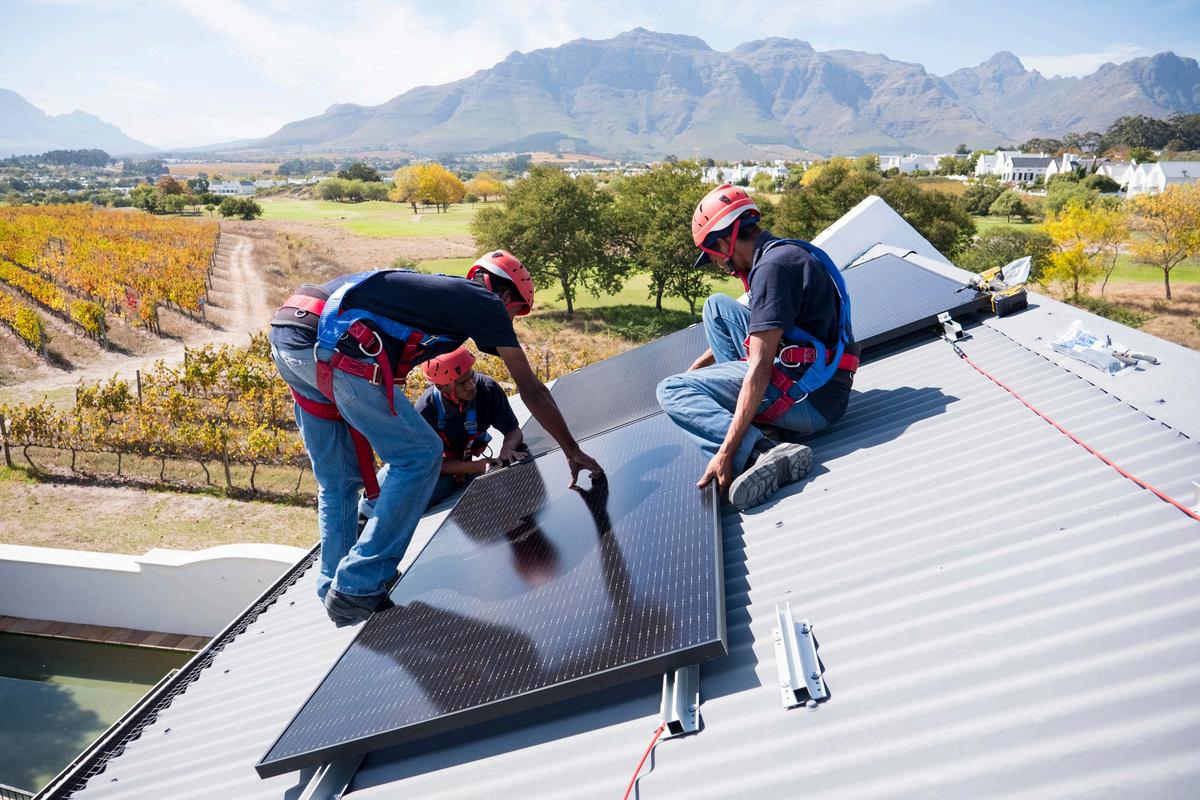
On a broader scale, India’s total installed solar PV capacity for the calendar year 2025 until August reached 25,265 41 MW It is estimated that the total installed capacity may cross 32 GW by the end of 2025, reflecting the ongoing expansion of both utility-scale and distributed solar projects across the country
The growth in solar energy is also evident in the breakdown between rooftop and ground-mounted solar systems Grid-connected solar rooftops have reached a cumulative capacity of 20 85 GW, demonstrating rising adoption among households, businesses, and industrial users. Meanwhile, ground-mounted solar plants, which form the backbone of India’s solar energy capacity, now stand at 93 90 GW These contributions together have helped India achieve a cumulative installed solar PV capacity of 123,130 13 MW by the end of August 2025.
The steady monthly additions and high-capacity projects in key states like Rajasthan indicate that India is on track to achieve its renewable energy targets. The combination of rooftop solar, off-grid solutions, and large ground-mounted solar plants ensures a balanced approach to meeting energy demands while reducing dependence on conventional sources.
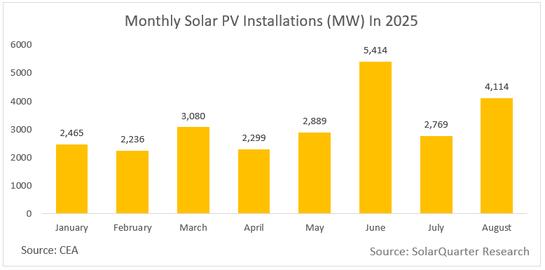

This continued expansion of solar infrastructure is not only significant for India’s energy security but also supports environmental objectives by reducing carbon emissions The ambitious installation targets, supported by favorable policies and technological advancements, are helping India maintain its position as a global leader in solar energy deployment
India’s solar journey in 2025, with rapid monthly additions and state-level leadership, reflects the country’s commitment to a sustainable energy future As more solar projects come online, the momentum is expected to continue, paving the way for a cleaner, greener, and more resilient energy landscape across the nation.
INDIA
UDIT GARG EXPERT SPOTLIGHTS
ManagingDirector&CEO KundanGreenEnergy
PoweringIndia’sGreenFutureThrough InnovationandSustainability
KEY HIGHLIGHTS:
From hydropower to solar, wind, and energy storage
Aligning business expansion with India’s renewable and social development goals
Leveraging technology, partnerships, and smart financing for resilient energy solutions
QHow would you describe Kundan Green Energy’s journey, and what drives India’s renewable sector growth?
Kundan Green Energy has grown organically, growing with and emulating sustainability From small beginnings in hydropower, we have grown into solar , wind energy and Energy Storage to ensure that we have a welldiversified clean energy portfolio and we have done our bit for India's green revolution We plan to bring economies energy solutions that are secure, affordable, and clean and promote economic and social development in communities Driven by technology and the power of responsibility, we want India to reach its renewable potential and become a true leader in turning the global planet low on carbon That the force of our expansion was to be grounded in faith in sustainable long-term value creation
What challenges and opportunities do you see in India’s renewable market, and how are you addressing them?
India’s renewable energy market presents excellent opportunities on the back of ambitious targets set by the government, increasing power consumption and favourable policy environment But obstacles persist in grid integration, land acquisition, financing, and policy certainty. We, at Kundan Green Energy, believe in the power of these, as an invitation to innovate We invest in modern technology; we invest in secure infrastructure, and we ensure that things can scale effectively Our attention is

not only to power generation but to establish sustainable ecosystems for the benefit of the communities We hope to play a significant part in India's clean energy transition, by combining design capabilities with engineering know how and foresight
QHow does Kundan Green Energy balance business leadership with the responsibility of advancing India’s clean energy and sustainability goals?
At Kundan Green Energy, business is not just about money and operating in an environment but being a foundational pillar for value that goes beyond finances Our growth plans are in perfect harmony with Indian clean energy and sustainability objectives, and every step forward is a step towards a greener, more resilient future.” As we seek scale and efficiency in business, we are equally dedicated to responsibility to the environment, the cities we serve and the nation's larger renewable energy goals
These priorities require a concise leadership resilience, prescience and collaboration Through its subsidiaries and affiliates, it is quite proud to build its business practices on; continuous investment in cutting edge technologies and processes to increase production efficiency and eliminate waste, solid relationships between the Company, policymakers, industry, the surrounding communities and our suppliers This works not only to the success of business, but also to a healthy clean-energy ecosystem in India
Driving sustainability is not a side project for us it’s who we are From growing hydropower to diversifying in solar and wind, from contributing to social and economic development in the rural areas, we see ourselves as the enabler for inclusive, sustainable development We envision being a benchmark for responsible growth in India’s renewable sector demonstrating that leadership in business can be achieved in harmony with leadership in sustainability

How are you leveraging innovation and partnerships to ensure leadership in India’s renewable sector?
We see innovation, collaboration, and smart financing as the tripod of long-term leadership in India’s renewable industry "In terms of innovation, we are deploying state-of-the art technology with the least loss to make the power grid more stable and looking at hybrid models where all (solar, wind, hydro and BESS) can be deployed together to provide consistent power". Partnerships matter, too we team up with policymakers, industry and communities to create scalable and inclusive solutions These collaborations allow us to service national energy policy with regional policy
On the financing side, durable, adaptive financing models are attracting patient investment to provide sustainability while enabling expansion Our leadership vision is not about capacity simply increasing – it’s a vision to build a renewable ecosystem that is resilient, community-based and futureproof This pragmatic strategy places us as a reliable energy partner in India’s trailblazing vision for clean energy commoditization in fighting pollution and climate change
QWhat expansion plans or milestones do you envision for Kundan Green Energy over the next five years in India?
Kundan Green Energy is targeting robust growth in its renewable portfolio over the next five years, the firm said in a statement Leveraging our rich experience in hydropower, we are venturing into mega solar and wind projects, with hybrid models under consideration to facilitate 24 × 7 power out of green sources " We will continue to focus on building capacity, using smart technology and efficiency in operations As important is our social economic impact–jobs, rural electrification, and sustainable development. Our vision is to become a significant contributor to India’s ambitious renewable energy targets and low-carbon future, by enabling growth with sustainability
LOHITH KN
Manager-FinanceandAccounts SungrowIndiaPvt Ltd
Navigating Financial Challenges with Effective Cash Flow Management
KEY HIGHLIGHTS:
Cash flow management remains the most critical challenge for sustaining business growth and stability. Cost efficiency is a shared responsibility, with employees contributing through resource optimization and digital adoption. The finance team aims to drive digital transformation with automation for accuracy, efficiency, and stronger financial governance

The following indicators are fundamental:
What is the most significant financial challenge businesses are currently facing?
Effective cash flow management remains a primary concern Even financially sound organizations may encounter difficulties if receivables are delayed Ensuring an optimal balance between receivables, payables, and working capital is essential to sustain growth and stability.
What role does the finance function play beyond accounting and reporting? Q Q Q
How can employees contribute to organizational cost optimization?
Cost efficiency is a collective responsibility Employees can support this initiative by using resources judiciously, minimizing waste, adopting digital processes in place of paper-based workflows, and exercising prudence in travel and utility usage These efforts collectively strengthen financial performance
Revenue vs. Budget: to assess alignment with financial targets
Operating Expenditure (OPEX): to ensure effective cost management
Cash Flow Position: to maintain liquidity and operational resilience.
Which financial indicators are most critical for business leaders to monitor regularly? Q
The finance function plays a strategic role by providing financial insights that enable informed decision-making, evaluating and mitigating risks, ensuring statutory compliance, and guiding the optimal allocation of resources to support organizational objectives.
Q
Sungrow’s finance vision leveraging digital transformation and automation to strengthen accuracy and governance.”

Do you have any financial guidance for employees on personal wealth management?
Employees are encouraged to develop disciplined financial habits Setting aside a fixed portion of income for savings, avoiding unproductive debt, and investing early in diversified financial instruments such as mutual funds, retirement schemes, and insurance products will help secure longterm financial well-being.
Q
What is the finance team’s strategic vision for the coming year?
Our focus will be on strengthening digital transformation within financial operations, leveraging automation to improve accuracy, efficiency, and transparency This will enable the organization to make faster, data-driven decisions and enhance overall financial governance

LEADERSHIP VOICES
LISA ZHANG
DeputyGeneralManager Growatt
Hybrid is Here: Leading India’s PV + Storage Revolution
KEY HIGHLIGHTS:
Wide inverter range with over a decade of proven experience in India
Leading the shift to hybrid “PV + Storage” with intelligent solutions.
AI-driven platforms for smarter O&M and energy management
QHow is Growatt positioning itself to support India’s fastgrowing solar inverter demand across residential, C&I, and utility markets?
Growatt is positioned to support India's fastgrowing solar inverter demand across residential, C&I, and utility markets through our comprehensive and reliable product solutions With mature products proven in over 180 countries globally, we offer a complete portfolio of PV inverters ranging from 0.6kW to 350kW, perfectly suited for the diverse needs of the Indian market Over the past decade of serving India, we have accumulated numerous successful case studies, having both witnessed and contributed to the growth of the local solar industry This deep experience positions us ideally to meet the expanding demand across all segments.
QWith the rise of hybrid and storage-ready inverters, what shifts do you see shaping India’s energy future?
Regarding the technology shifts shaping India's energy future, we believe the key driver is the deep integration of solar PV with energy storage The intermittency of solar power impacts grid stability and project returns, and energy storage is the crucial solution to this challenge With rapid advancements in lithium battery technology and significant cost reductions, energy storage systems are becoming increasingly prevalent worldwide This trend is set to take off in the Indian market as well We foresee a shift in the coming years from standalone solar PV towards a hybrid "PV + Storage" model This transition will create
substantial demand for intelligent hybrid inverters, storage-ready solutions, and energy management systems capable of optimizing charge/discharge strategies Growatt began its strategic layout in energy storage as early as 2015 After a decade of development, we now offer a comprehensive portfolio of residential and C&I energy storage products, with power ratings covering 2 5-300kW and capacity from 2.56-600kWh, positioning us to effectively support India in achieving a more stable, flexible, and efficient energy future
QDigitalization is changing solar O&M. How is Growatt’s smart platform improving efficiency for Indian customers?
Regarding digitalization changing solar O&M, Growatt is improving efficiency for Indian customers through our self-developed smart service platforms Our Growatt Monitoring & O&M Cloud Platform, serving over 6 million users globally, enables 7*24h status scanning and intelligent one-click diagnosis
More importantly, our commitment to digitalization extends far beyond O&M We have developed the Smart Home Energy Management Cloud Platform and the Smart Park Energy Management Platform. By leveraging big data and AI technologies, these platforms accurately forecast PV generation and user consumption patterns to determine

the optimal energy strategy This maximizes the utilization of solar energy, reduces emissions, and enhances efficiency Integrated with IoT technology, they offer users a comfortable and intelligent lifestyle. This means Growatt provides Indian customers not just with a monitoring tool, but with a comprehensive energy management solution from efficient O&M to smart energy consumption ultimately delivering maximum value.
QWhat new products, innovations, or partnerships can we expect from Growatt in India over the next years?
Looking ahead, Growatt will continue to enhance our product portfolio in the PV and energy storage sectors Our core strategy is threefold: First, we will consistently improve product conversion efficiency through technological innovation to maximize energy yield for our customers Second, we are committed to reducing costs and increasing efficiency across our supply chain and manufacturing processes, delivering greater value Third, and most importantly for the Indian market, we will focus on refining and developing our residential and C&I energy storage products to better meet local needs, such as hightemperature conditions, specific regulations, and consumption patterns We are committed to growing with the Indian market and contributing robustly to its clean energy future
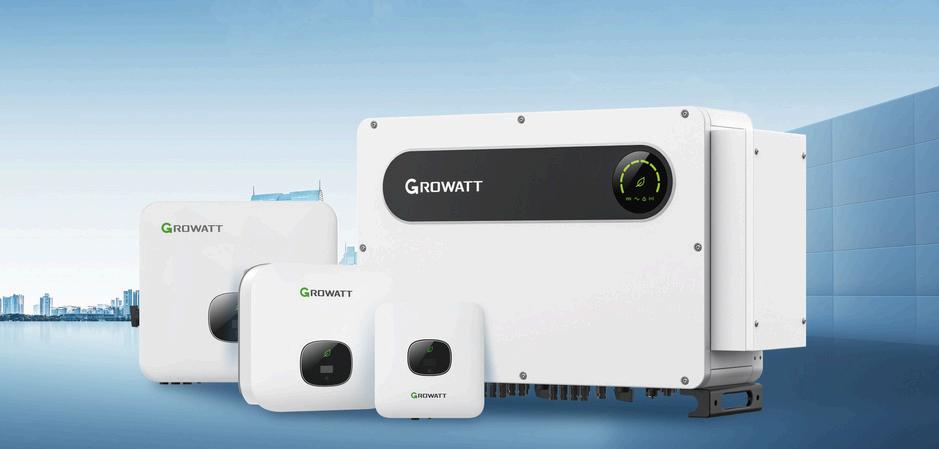

MONIKA SHEKHAR
Asst.GeneralManager–Marketing HoymilesIndia
Hoymiles builds awareness with its Solar Desh Yatra, reaching 60+ cities.
KEY HIGHLIGHTS:
Hoymiles: Driving Solar Awareness Across India.
Expanded portfolio now includes hybrid inverters, string inverters, and BESS.
Future plans focus on education-led marketing and energy independence.
QHow is Hoymiles aligning its marketing with new products and strategy in India?
Hoymiles entered India market as a ‘Disrupter’, introducing microinverter technology that redefined safety, reliability, and performance in solar Our strategy has been twofold: first, to build awareness across key cities and geographies, and second, to position Hoymiles as a trusted household name in solar We believe that technology and education must go hand-in-hand, which is why we have created a unique platform like the Solar Desh Yatra a dedicated truck roadshow that travels across the country to engage directly with installers, distributors, and end customers Till date, the truck has already reached 60+ cities (Tier 1, Tier 2, and Tier 3), creating strong visibility and deep connections across India’s diverse markets. By showcasing our products on the ground, we not only demonstrate their unique value but also empower stakeholders with the knowledge to adopt them confidently. Thus, our marketing activity in India is integrated with city-level activations to align with our strategic direction of making solar accessible, safe, and “Open Energy For All ”
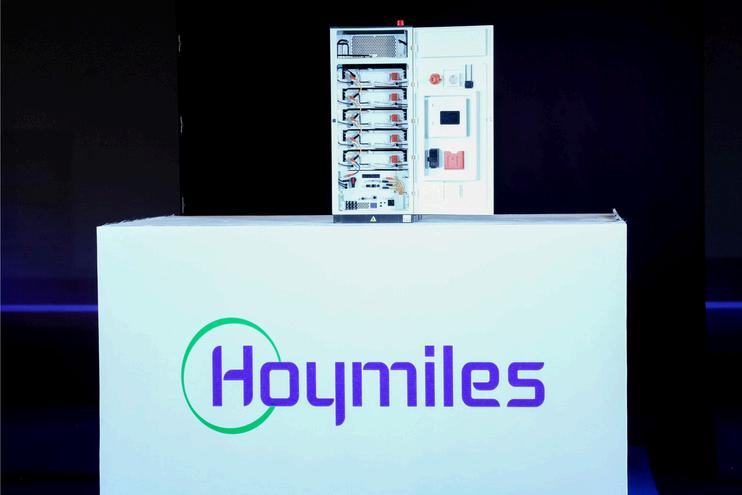


QWhat role do Hoymiles’ latest solar inverter updates play in addressing India’s evolving market needs?
India’s solar market is evolving rapidly, with demand rising across residential, commercial, and utility-scale segments To meet these diverse needs, we have launched a comprehensive portfolio that goes beyond microinverters and now includes hybrid inverters, string inverters, and battery energy storage systems (BESS) This allows us to serve both rooftop and large-scale applications with scalable, reliable, and efficient solutions By combining advanced storage options with high-performance inverter technologies, we empower customers with greater energy independence, grid stability, and futureproof installations In short, our portfolio doesn’t just respond to India’s current requirements; it is designed to lead the market into its next phase of growth
QHow will Hoymiles link its product roadmap and marketing to strengthen solar leadership in India?
Our roadmap is deeply intertwined with our marketing strategy For focus is not just to launch products; we are creating ecosystems of awareness, training, and trust Future plans include expanding our educationdriven marketing and localized campaigns, ensuring installers and end-users alike understand the “why” behind our technology Simultaneously, upcoming innovations in storage and hybrid solutions will be supported with campaigns that showcase Hoymiles as a leader in the next wave of energy independence The longterm goal is clear: to strengthen our leadership by combining disruptive innovation with strong, community-driven engagement We look forward to continued support from our Customers & Partners in this Journey.
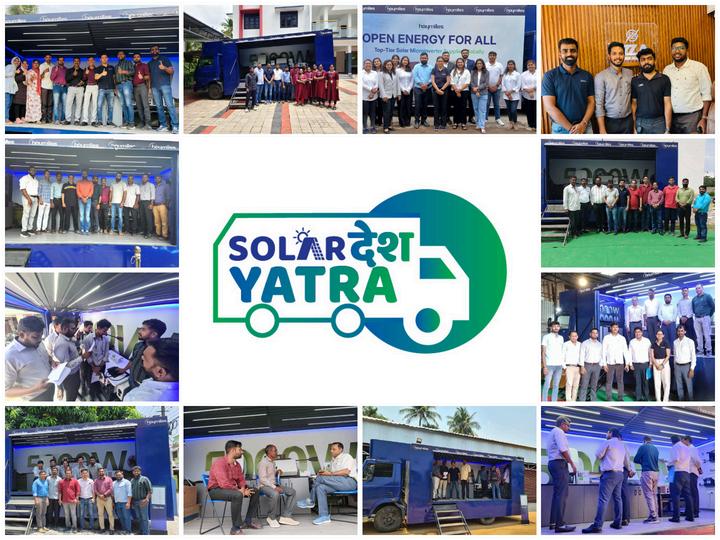
LEADERSHIP VOICES
BHARAT SINGH T N
Director-Sales&Marketing
NingboDeyeNewEnergy
Solar + Storage: The Future Is Here with Deye
KEY HIGHLIGHTS:
Deye offers complete solar + storage solutions from rooftop to utility scale.
500+ R&D experts ensure efficient, reliable, and safe products
Focus on solar + storage and EV charging to power India’s growth.
QWhich customer segments residential, commercial, or utility are you primarily targeting with your new product line?

Can you share the highlights of Deye Inverter’s latest product portfolio and how it caters to the Indian solar market?
How do these showcased products align with India’s renewable energy transition and future solar growth? Q
Deye provide solution to roof top solar through reliable and efficient products; micro inverters string inverters & hybrid inverters for various applications along with lithium batteries
Residential commercial industrial expert for the entire range of applications & solutions
In the utility scale Deye introducing BESS containerised solution which is need of an hour for grid stability and for self reliant
To achieve net zero Deye planning for EV charger solution for residential and C&I application
How do your solutions address the growing demand for efficiency, reliability, and safety in solar power systems?
Deye products undergo lot of trials before introducing it into the market under harsh test conditions to make Deye products efficient reliable and safe to be used in the projects
500+ R&D talents working toward quality sustainable and affordable products which can be used in all the categories

Deye target all the 3 segments by it’s innovative solutions; for residential (3kw to 20kw) efficient energy storage solutions which is affordable & efficient, for commercial heavy load application (30kw to 125kw) with safety & reliable solutions and for utility (2Mwh to 4Mwh) for the various application of storage & usage
QIndia being mass potential country for Deye, we established several service centres for quick turn around time during faults in the inverter and being part of India’s solar growth by supporting local distribution network, local manufacturing setup and obtaining all necessary and mandatory certificates to cater to Indian customer with long term business relationship with distributors as they represent organisation in India for trust and confidence
From rooftops to utility-scale applications, Deye empowers India’s clean energy transition with innovative inverters, lithium batteries, and BESS solutions.”
QWhat upcoming innovations can customers expect from Deye Inverter as part of your product roadmap in India?
Storage in Utility sector is future for solar + storage
Solarising commercial & industrial roofs with solar + storage
Solar + storage is future gateway for glory and growth of India
Deye being part of this growth shall deliver innovative affordable sustainable efficient and reliable products to their users
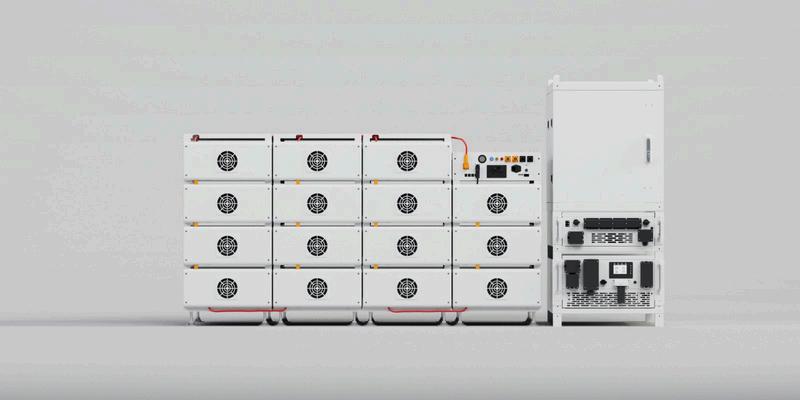
NAVEEN KUMAR
CTO–AsiaPacific
TBEAXi'anElectricTechnologyCo Ltd
Advancing Grid Stability with Next-Gen SVG and Inverter Technologies
KEY HIGHLIGHTS:
TBEA is scaling solar manufacturing to 20 GW with advanced grid-forming and string inverter technologies
SVG solutions ensure grid stability with reactive power, harmonic suppression, and voltage-frequency support
Aligned with policies and Make in India, TBEA offers robust, compliant, and future-ready solutions
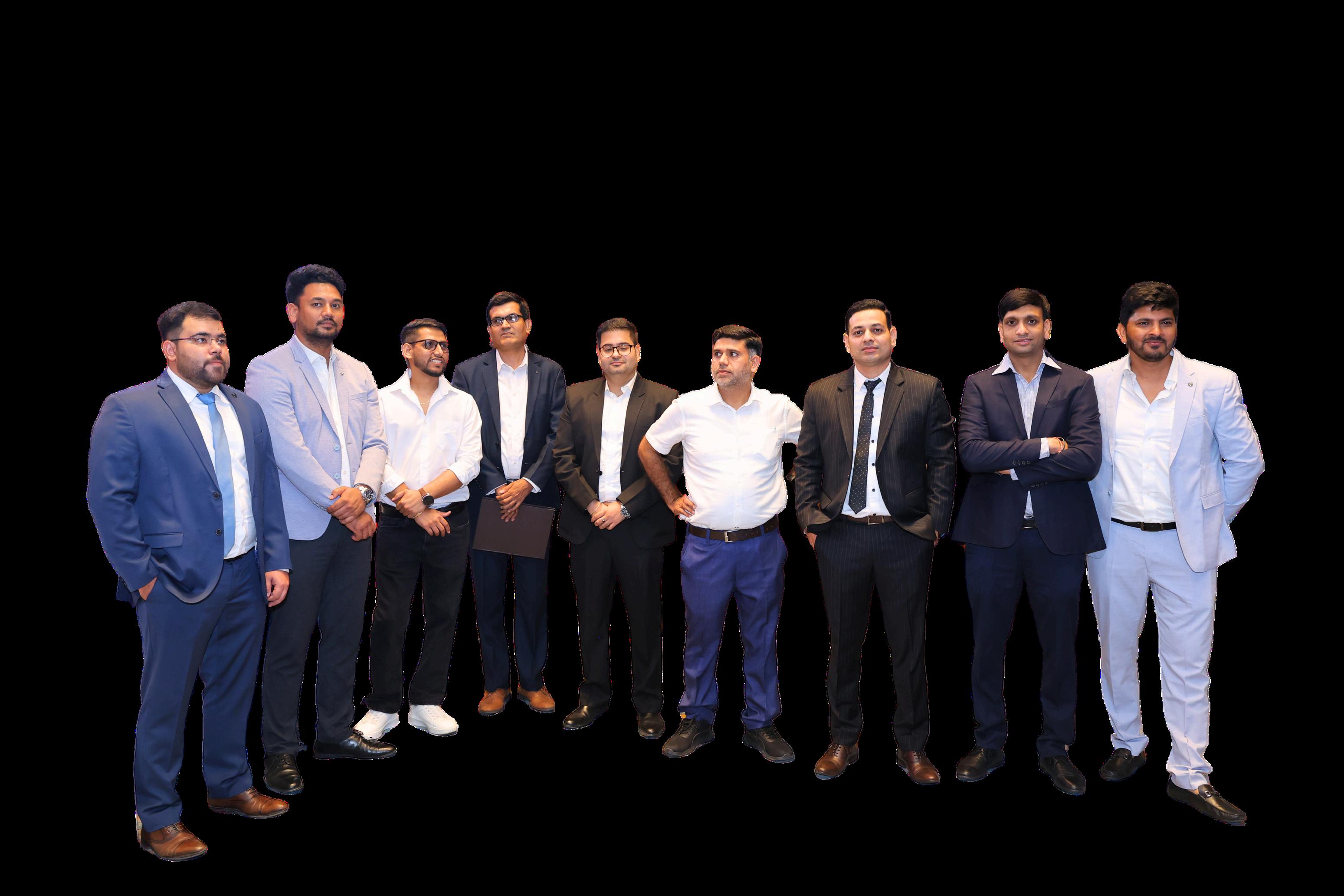
QHow do you see India’s solar PV market evolving, and TBEA’s role in the next 3-5 years?
India’s solar PV market is poised for transformative growth over the next 3-5 years, driven by ambitious renewable targets, accelerating deployment across utility and distributed segments, and the rapid adoption of technology innovations. TBEA is wellpositioned to play a pivotal role as a technology leader and local solutions provider, supporting India’s journey toward 500GW non-fossil capacity As part of its strategic expansion, TBEA plans to increase its manufacturing capacity from 15GW to 20GW in the upcoming years, ensuring scalable supply for India’s rapidly growing solar demand
The next phase of growth will see solar projects not only expand in scale but also leverage advanced inverter technologies. Gridforming inverter technology is becoming increasingly important, allowing renewable plants to actively establish grid voltage and frequency crucial for supporting grid stability as renewable penetration deepens. This is particularly relevant in India, where grid variability and the integration of storage and hybrid systems are becoming more common

Grid-forming inverters enable black-start capabilities and allow for resilient microgrids, directly addressing the country’s need for both urban grid reinforcement and rural electrification
Similarly, TBEA’s focus on string-type power conversion solutions brings greater scalability and operational flexibility to solar deployments String inverters support millisecond-level response for advanced grid services, are easier to install and maintain, and significantly improve overall system availability and uptime Their modular approach aligns with diverse deployment models across rooftop, commercial, and utility-scale projects a key requirement given India’s varied solar landscape
By advancing grid-forming technology, highperformance string PCS solutions, and massively scaling manufacturing capacity to 20GW, TBEA is enabling a resilient, flexible, and future-ready solar market in India In the coming years, these solutions will underpin grid reliability, facilitate integration with storage, and help unlock new markets, allowing India to meet and exceed its green energy ambitions
QHow does TBEA’s SVG technology support grid stability and reactive power management in India?
TBEA’s SVG (Static Var Generator) technology plays a crucial role in supporting grid stability and reactive power management for the Indian power sector, especially as renewable energy installations become more widespread and grid complexity increases SVG technology provides rapid and precise dynamic reactive power compensation, which is essential for maintaining grid voltage within desired limits and ensuring reliable integration of solar and wind projects In India alone, TBEA has already supplied more than 25 GVAr of SVG solutions,
with successful installations across major renewable projects The company’s global experience extends to regions such as the Middle East and North Africa (MENA), Europe, and Latin America, further showcasing the reliability and versatility of these solutions
TBEA’s SVG systems are designed not only to stabilize voltage but also to proactively address harmonics suppression a growing challenge as renewable penetration rises Harmonic suppression is especially critical for renewable energy (RE) plants, as excessive harmonics can degrade power quality, cause equipment malfunctions, and even lead to regulatory noncompliance By minimizing both harmonics and voltage fluctuations, TBEA’s SVG technology ensures safe and stable operation for gridconnected and distributed RE assets
Looking forward, TBEA is advancing its solutions to provide both voltage and frequency stabilization capabilities This dual approach addresses the evolving needs of India’s power grid, where fluctuations in both frequency and voltage due to intermittent renewable generation can pose significant operational risks Through these offerings, TBEA is supporting the reliable, efficient, and future-ready expansion of RE capacity while complying with even the most stringent grid codes in India and beyond
QHow is TBEA aligning its products and services with India’s evolving renewable energy policies?
TBEA aligns its products and services closely with India’s evolving renewable energy policies by ensuring full compliance with the latest regulations set forth by the Central Electricity Authority (CEA) and Central Transmission Utility (CTU) These regulations mandate stringent grid code adherence, reactive power support, and advanced grid stability functions for renewable energy projects connected to the interstate transmission system (ISTS) To this end, TBEA has enhanced and updated its product portfolio especially in string-type power conversion systems (PCS), grid-forming inverter technology, and static var generator (SVG) solutions to meet the specific technical and operational requirements of India’s renewable energy projects
TBEA’s commitment includes rigorous standardization and testing of its equipment to comply with Indian grid codes and international standards, ensuring seamless integration with India’s grid infrastructure This standardization covers voltage and frequency support, harmonic mitigation, fault ridethrough capabilities, and compliant reactive power management, all essential for secure and reliable grid connectivity
Additionally, TBEA’s product designs reflect the diverse environmental and operational conditions found across India from high temperatures and humidity to altitude variations ensuring robust performance in all regions By continuously innovating with features such as enhanced MPPT ranges, corrosion resistance, and intelligent operation and maintenance (O&M), TBEA’s offerings maximize project efficiency and lifetime value.
The company is also aligned with government initiatives like “Make in India,” supporting local manufacturing and supply chain resilience, thus contributing to national self-reliance goals Through its comprehensive ecosystem approach, including turnkey project solutions, technology services, and lifecycle support, TBEA is well-equipped to facilitate the rapid, sustainable growth of India’s renewable energy sector while ensuring compliance with evolving policy frameworks

QWhat innovations or new products can India expect from TBEA in smart inverters and SVG solutions?
India can expect several cutting-edge innovations and new products from TBEA in the domains of smart inverters, SVG solutions, and grid-forming inverter technologies that directly address the evolving needs of the renewable energy sector
TBEA’s next-generation SVG solutions are being enhanced with advanced features for improved reactive power compensation, dynamic voltage stabilization, and real-time harmonic suppression critical for maintaining power quality in increasingly complex solar and wind power plants Beyond voltage control, upcoming SVG models will also incorporate frequency stability functionalities, making them versatile tools for grid operators to ensure reliable, high-quality power as renewable penetration deepens
In smart inverter technology, TBEA is expanding its string-type power conversion systems (PCS), which provide modular, scalable, and highly efficient solutions tailored for hybrid renewable and storage applications. These string PCS systems add significant value by extending battery life cycles through improved management of circulating currents among battery strings, enabling redundancy and optimized depth of discharge (DoD). This leads to lowered operating costs and enhanced system reliability, perfectly aligned with the rise of grid-connected storage projects in India
TBEA is scaling its manufacturing capacity from 15 GW to 20 GW, reinforcing its commitment to India’s clean energy transition and ensuring availability of high-quality, locally manufactured power conversion solutions to meet the nation’s solar demand.”
Additionally, TBEA is making strong advances in grid-forming inverter technology, which represents a leap beyond conventional gridfollowing inverters These grid-forming inverters actively regulate grid voltage and frequency, providing synthetic inertia and black-start capabilities This technology is crucial for integrating high shares of intermittent renewables and facilitating resilient microgrids and independent power systems, essential for India’s ambitious push toward a decentralized and resilient clean energy future
Together, these innovations demonstrate TBEA’s commitment to delivering integrated, smart, and future-ready renewable energy solutions that align with India’s dynamic policies and market demands, ensuring both optimal performance and grid stability


DEEPAK JAIN
ChiefTechnicalOfficer(CTO) INASolar
Driving Growth Through Technology, Quality, and Commitment to “Make in India”
KEY HIGHLIGHTS:
INA Solar’s growth is powered by advanced TOPCon technology, automation, and sustainable manufacturing.
Rigorous quality control and global certifications ensure top performance and reliability
Expanding to 7 GW modules and 4.5 GW cells, 18000 MTA Aluminium Frames .
QINA Solar has rapidly expanded capacity in recent years. What key factors have driven this growth?
At INA Solar, our journey of growth has always been guided by a clear vision: to make India self-reliant in renewable energy and to empower every household, business, and community with sustainable solar solutions Over the years, our expansion has not been by chance but by design, driven by strategic investments, technological innovation, and a deep-rooted commitment to quality and sustainability
We began with a simple yet powerful idea: to manufacture world-class solar products in India, for India and the world Today, I am proud to say that INA Solar stands among the country’s leading integrated solar manufacturers with a 5.5 GW PV Module capacity, backed by state-of-the-art, fully automated facilities in Jaipur, Rajasthan Further expanding our capacity by 2025-28 to 7 GW PV Modules, 4 5 GW G12R N-Type TOPCon Solar Cell and 18,000 MTA Aluminum Frames
Our growth story has been powered by continuous investment in advanced technologies and infrastructure. We have


adopted cutting-edge M10R & G12R N-Type TopCon cell technologies, which significantly enhance module efficiency and performance These innovations have enabled us to deliver products that are not only technologically superior but also tailored to India’s diverse climatic conditions
However, technology alone doesn’t drive success - people do Our greatest investment has been in our team of engineers, researchers, and professionals who constantly push the boundaries of innovation Together, we’ve built a strong R&D foundation that allows us to improve product design, optimize efficiency, and ensure durability, giving our customers the best value and reliability in every panel we produce.
Another cornerstone of our growth has been our unwavering focus on sustainability From integrating green manufacturing practices and waste recycling to reducing our carbon footprint through energy-efficient operations, every step we take reflects our belief that true progress must be environmentally responsible
We have also embraced digital transformation and automation to enhance production precision, traceability, and operational excellence This forward-thinking approach has made our manufacturing smarter, faster, and more consistent, enabling us to scale effectively while maintaining the highest standards of quality
At its core, INA Solar’s expansion is a reflection of our belief in India’s renewable energy potential and our role in shaping that future As we continue to grow, we remain committed to innovation, sustainability, and nation-building, ensuring that every panel we produce contributes to a brighter, cleaner, and more self-reliant tomorrow

QHow does INA Solar ensure quality and performance of TOPCon, bifacial, and monofacial modules?
Ensuring superior product quality and consistent performance has always been at the heart of our operations. As we embrace advanced technologies, our approach combines rigorous engineering, precision manufacturing, and continuous innovation to deliver solar panels that exceed expectations
Each module undergoes a multi-layered quality assurance process, beginning with careful selection of raw materials and extending through every stage of production Our fully automated manufacturing lines minimize human error and ensure consistent accuracy in module assembly and final testing They go through rigorous assessments, including electroluminescence imaging, thermal cycling, and damp heat endurance, conducted in our full-fledged laboratory where IQC (Incoming Quality Control), IPQC (InProcess Quality Control), and FQC (Final Quality Control) processes are meticulously followed to guarantee performance even in the toughest environments Our panels also carry prestigious certifications including ALMM, BIS, IEC, ISO, UL, and CE, making them globally benchmarked and trusted
Advanced technologies like TOPCon require meticulous control over passivation layers and doping processes to enhance efficiency and reduce degradation Similarly, bifacial modules are designed to maximize energy capture from both sides, which demands precision in module alignment, encapsulation, and materials. Our in-house R&D team continuously monitors and optimizes these parameters, combining field data with simulation tools to predict long-term performance and ensure consistent yield
Beyond machinery and testing, quality is a reflection of disciplined processes and an empowered workforce Every team member, from engineers to quality inspectors, is trained to uphold the highest standards. Traceability at every step allows us to track performance across batches, ensuring that even the most advanced modules meet global benchmarks
Sustainability also forms a key part of our quality philosophy We integrate ecofriendly practices in manufacturing and packaging, reducing environmental impact while delivering reliable panels that support India’s clean energy goals
Ultimately, product quality is about trust Our customers, whether deploying utilityscale plants or rooftop installations, rely on the durability, efficiency, and safety of our panels Each unit we deliver is a promise - a promise that it will perform, endure, and empower communities with clean energy for decades
For us, excellence in solar technology is not only about meeting standards but about setting new benchmarks By combining innovation, stringent quality control, and a forward-looking mindset, we continue to deliver solar panels that are Made in India, engineered for the world.
QWhat role does INA Solar play in India’s energy selfreliance and solar capacity goals?
With the government’s ambitious solar capacity targets under the National Solar Mission, India is poised to become a global renewable energy leader, and we see ourselves playing a pivotal role in realizing this vision
As a homegrown company, we are deeply committed to the “Make in India” philosophy. By manufacturing high-quality solar panels domestically, we reduce dependence on imports, strengthen local supply chains, and contribute to the creation of skilled jobs across the country Our fully integrated manufacturing facilities in Jaipur and other locations allow us to produce solar modules that meet international standards while being 100% Indian-made, combining global quality with local expertise.

Our contribution extends beyond manufacturing capacity We aim to be a strategic partner in India’s solar growth, collaborating with utilities, developers, and government initiatives to accelerate the adoption of solar energy across rooftops, commercial projects, and utility-scale plants By providing high-efficiency, reliable, and durable panels, we help ensure that solar installations deliver maximum energy yield and long-term performance, which is critical for achieving India’s capacity targets
Innovation also plays a key role in our contribution to the national mission. We invest continuously in research and development to adopt advanced technologies like TOPCon modules, ensuring that India’s solar infrastructure remains at the forefront of global standards. This approach not only boosts energy output but also reduces the levelized cost of electricity, making solar a more accessible and viable option for Solar Parks, Solar Pumps, Commercial, Industrial and Residential
Furthermore, INA Solar actively supports government initiatives for sustainability and green energy By adhering to stringent environmental standards, promoting renewable energy awareness, and building eco-friendly manufacturing practices, we align with the country’s broader goals of reducing carbon emissions and fostering a sustainable energy ecosystem
For me, India’s energy self-reliance is a shared responsibility. At INA Solar, we see ourselves not just as manufacturers, but as enablers of a clean energy revolution, creating a scalable and sustainable solar ecosystem Our mission is to empower India with solar power that is locally produced, globally trusted, and capable of driving the country toward its ambitious renewable energy targets
In essence, INA Solar’s role is to bridge technology, capacity, and reliability, helping India realize a future where clean, affordable, and domestically produced energy fuels economic growth, energy security, and environmental stewardship
QWhat are the company’s key strategic priorities for product development and new technologies?
As the solar sector evolves, we are continuously exploring new technologies, enhancing our manufacturing capabilities, and expanding our product portfolio to meet both domestic and global demand
One of our key focus areas is advanced cell and module technologies We are actively investing in high-efficiency TOPCon modules, while also exploring next-generation M10R and G12R technologies These innovations are designed to increase energy yield, improve durability, and reduce the overall cost of solar power, making solar energy more competitive and accessible across all sectors
On the manufacturing front, INA Solar is actively expanding its production footprint to meet rising demand. We have commenced work on a new state-of-the-art facility in Madhya Pradesh, dedicated exclusively to the production of 4 5 GW of G12R N-Type TOPCon solar cells With this expansion, our overall manufacturing capacity by 2025-28 is projected to reach 7 GW of PV Modules, 4 5 GW of Solar Cells, and 18,000 MTA of Aluminum Frames This growth will strengthen our integrated production ecosystem, enhance automation, ensure consistent quality at scale, create local employment opportunities, and further reinforce our commitment to the ‘Make in India’ mission
Our diverse product range - from TOPCon and bifacial to monofacial modules, with power outputs ranging from 500 Wp to 630 Wp, offers tailored solutions for residential rooftops, commercial installations, utility-scale solar parks, and industrial projects Designed not only to power homes, businesses, and industries but also to stand the test of time, our modules deliver performance that customers can rely on for decades.
To reinforce this commitment, INA Solar provides a 30-year linear performance warranty and a 12-year product warranty, assuring our clients that their investment is safe, secure, and future-ready Beyond manufacturing, our customer-first approach ensures seamless support from installation to after-sales service, so our partners and clients always feel guided and empowered
Our vision goes beyond business objectives. It is about supporting India as it explores an ambitious renewable energy trajectory, potentially reaching 900 GW by 2032 and 1,800 GW by 2047, empowering communities with clean and affordable energy, and leaving a greener legacy for generations to come
At INA Solar, we believe that together, we shine brighter Every panel we build, every milestone we achieve, and every partnership we form brings us one step closer to powering a sustainable future for India and the world
LEADERSHIP VOICES
ASHOK DM
Founder,CEO&MD EnerMANTechnologies
From Cost Efficiency to Global Expansion: EnerMAN’s Renewable Journey
KEY HIGHLIGHTS:
EnerMAN’s IoT and AI solutions enable real-time monitoring and predictive analytics for solar plants. In-house innovations cut SCADA costs by 70% and boost energy efficiency by 2%.
New storage solutions and global expansion support renewable adoption and net-zero goals
With your smart IoT and AI monitoring, how is EnerMAN changing the management of solar plants?
EnerMAN IoT SCADA (ETi-SOL), a web and mobile application software with CMS (Central Monitoring System) / RMS (Remote Monitoring System) capabilities, can be accessed by customer 24/7 from anywhere using internet connected smart phone / Laptop / PC They can access minute-wise live data for monitoring & control of the performance of key equipment Our products notify the alerts /alarms on breakdown of equipment in fraction of a second This will help site Engineers/Technicians attend the breakdowns to reduce the loss of generation
AI/ML driven ETi-SOL provides an analysis report on Inverters performance ranking; this will help Engineers / Technicians to take corrective action to improve the performance of low performing Inverters
ETi-SOL also provides analysis report on Inverter downtime and grid downtime loss on hourly, daily and monthly basis; this will help Engineers /Technologists to takepreventive action to reduce the down time of Inverters and grid This very feature empowers the designer to choose better performing PV modules, Inverters and other key equipment for the future projects


ETi-SOL automatically sends emails to developers on daily generation reports and monthly generation reports ETi-SOL shares live data with customer’s Finance and Accounting System automation of revenue and expenses management
ETi-SOL shares energy forecast, and live performance data with QCA (Qualified Coordinating Agencies) and SLDC (State Load Dispatch Centers) for energy scheduling ETiSOL shares live data with SEDM Portal (Solar Energy Data Management) for PM-KUSUM projects which enables effective management of distributed solar system by automating the billing process with efficient implementation of financial support schemes
Advanced technology often comes at a cost. How do you keep solutions affordable while still being innovative?
EnerMAN started developing products with primary goal of affordability in cost sensitive Indian market We are happy to claim, that we have contributed in bringing down cost of Solar PV SCADA per MW from more than INR 3.5 lakhs in 2015-16 to less than INR 1 lakh by 2018-19 We have built end-to-end products including Hardware, Firmware, Software and Mobile Apps with our in-house team in Bengaluru using open-source software /platforms to bring down the cost. EnerMAN products helps in improving overall energy generation efficiency by more than 2% The 2+ % increase in energy generation from 2 7+GW Solar PV plants/Rooftops translate to 72+ million units additional generation per year.
QEach market has its own approach How do regional factors shape digital monitoring in solar plants?
Every country or state has their own rules, guidelines, policies and schemes for renewable energy These require specific features or customization in products to enforce these regulations and compliance to regional rules and guidelines
Our complete set of products ETi-SOL, ETiEDGE, ETi-PPC, ETi-ZES, ETi-LOG, and ETi-LMS provides all necessary local requirements, which helps customers setup and operate renewable assets by following mandatory local regulations
QHow does EnerMAN help solar companies and developers move faster toward their netzero targets?
Energy Storage is becoming part of Renewable Energy; many solar PV plants integrated with energy storage to improve the grid stability and 24/7 stable power guarantee EnerMAN is developing ETi-BESS (Battery Energy Storage System) monitoring, control and analysis products for BESS This will support utilizing renewable energy 24/7 in future
EnerMAN is developing advance features and analytics to reduce the losses and improve the performance of the Solar PV assets EnerMAN planning to expand its presence in APAC, North America, Australia, ME and African countries in coming years
QWhat’s next for EnerMAN? What are your main goals for growth and new offerings in the renewable energy market?
Energy Storage is becoming part of Renewable Energy; many solar PV plants integrated with energy storage to improve the grid stability and 24/7 stable power guarantee EnerMAN is developing ETi-BESS (Battery Energy Storage System) monitoring, control and analysis products for BESS. This will support utilizing renewable energy 24/7 in future
EnerMAN is developing advance features and analytics to reduce the losses and improve the performance of the Solar PV assets EnerMAN planning to expand its presence in APAC, North America, Australia, ME and African countries in coming years
AJAY PRATAP
CountryHead-India CybridTechnologiesInc
RayBo® Film: Efficiency and Reliability Redefined
KEY HIGHLIGHTS:
RayBo® film boosts solar efficiency, durability, and ROI
Cybrid leads with advanced encapsulants, backsheets, and tapes for next-gen modules.
Expansion in India positions Cybrid as a trusted partner in solar and beyond.
Can you share how flagship products like RayBo® film add value to solar PV projects?
RayBo®UV Conversion film is our flagship products because of the unique value it delivers to solar PV stakeholders With excellent UV conversion, and high optical transmission, RayBo® maximizes module efficiency and ensures durability across diverse climates By extending module lifetime and lowering UVID degradation , it directly enhances return on investment for solar developers
What recent technological advancements from Cybrid are shaping solar PV material trends?
Cybrid’s R&D is focused on advancing materials that match the industry’s move toward N Type technology especially in glass-to-glass module designs. Our innovative encapsulant films are highly reliable.

Additionally, our cell fixing tapes and edge sealing tapes are playing a critical role in module assembly and long-term protection Further, our transparent backsheets are major choice for manufacturers and Project owners These solutions help manufacturers improve process


efficiency and enhance reliability ensuring performance & operational stability throughout the manufacturing & module lifecycle.
Q
Apart from the RayBo® film, what new products or solutions are you showcasing?
Beyond RayBo®, we are highlighting our MoPro products for Solar PV Plant repair & maintenance like repairing of Solar PV Module having Backsheet crack & scratches, Glass Crack, Sealant crack etc Our Light weight module and materials received high shout out from the industry Further, we are actively working in Indian market to launch our products for BESS, EV and Semiconductors.
Q
How is Cybrid collaborating with developers and manufacturers in India to ensure performance and durability?
Collaboration for us means tailoring our solutions to local environmental and operational realities In India, our team works closely with manufacturers to align encapsulant, backsheet and tape performance with high-UV, hightemperature & humidity conditions, and to ensure modules pass rigorous certification standards We believe this hands-on approach from testing to production optimization is key to building trust and ensuring long-term reliability in the field We have innovative & reliable Product Portfolio to meet demand of Reliability and increased ROI which are key factors for both developers and manufacturers
Q
What are the key growth opportunities for Cybrid in India and the Asia Pacific market?
We already have our overseas HQ in Singapore for further expansions globally Our Encapsulation & Backsheet factory in Vietnam is already operational and over booked Further, we are actively working to have manufacturing base in India and are awaiting approvals Hope approvals will be in place soon so that we can support the “Make in India” program with our manufacturing expertise and innovative products
QWhat sets Cybrid apart from other material suppliers in the solar space?
Two things: Innovation and Partnership Innovation means constantly developing solutions for the next wave of module technologies Partnership means working hand-in-hand with developers and manufacturers, not just as a supplier but as a technical collaborator That’s why our products like RayBo®UV Conversion film, encapsulants, Backsheets and functional tapes are not just commodities, but solutions designed with realworld module performance in mind
QLooking ahead, what is Cybrid’s long-term vision for the solar PV industry?
Our vision is to be the trusted backbone for advanced solar modules worldwide. As the industry keeps on transiting to new technologies, we want to be the innovative partner who provides the materials that make these technologies change possible Ultimately, our goal is to support the global clean energy transition by ensuring modules last longer, perform better, and deliver maximum value
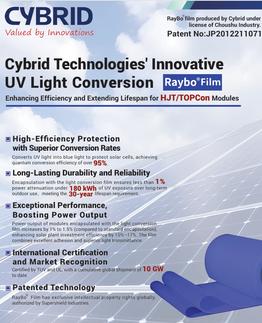
VINEET MITTAL
Director
NavitasSolar
Shaping a Sustainable Tomorrow through Advanced Solar Technologies
KEY HIGHLIGHTS:
Navitas Solar is accelerating India’s clean energy shift with reliable and accessible solar solutions.
It focuses on TopCon, Mono PERC, and Bifacial technologies for higher efficiency and long-term performance
Certified and tested to global standards, Navitas ensures quality and innovation in India’s growing solar market
QWhat is Navitas Solar’s vision and role in India’s renewable energy journey?
At Navitas Solar, our vision is to accelerate India’s clean energy transition by delivering high-quality, reliable, and sustainable solar solutions. We are committed to making solar energy accessible for industries, businesses, and homes, contributing to India’s renewable energy goals and creating a greener, energysecure future
QWhich solar cell technologies are you focusing on, and how do they improve efficiency?
At Navitas Solar, we are strategically focusing on advanced solar cell technologies such as TOPCon (N-Type), Mono PERC, and Bifacial modules
Our adoption of TOPCon technology marks a significant advancement in efficiency and reliability It enables higher power generation, superior temperature performance, and reduced degradation, ensuring consistent long-term energy yield
We have also introduced our new highefficiency G12R module, designed to deliver greater output with optimized performance, especially for utility-scale and rooftop installations.

Additionally, our Bifacial modules enhance power generation by capturing sunlight from both sides, while Mono PERC modules continue to provide dependable efficiency even under low-light conditions Driven by continuous R&D and innovation, Navitas Solar remains committed to integrating nextgeneration technologies that offer high performance, durability, and lasting value to our customers and partners.

Each module undergoes extensive testing to ensure durability, consistent performance, and long operational life making Navitas Solar a trusted name in the industry

QInnovation meets performance TOPCon and G12R redefine efficiency and durability.”
QWhat quality standards and certifications make your products reliable?
Navitas Solar adheres to stringent quality control measures across every manufacturing stage Our modules are certified with BIS, IEC, CE, and ISO standards, and are listed under the MNRE ALMM.
What key market trends and policy impacts do you see shaping solar adoption?
India’s solar market is growing rapidly due to supportive government policies, PLI schemes, and Make in India initiatives.
Key trends include the shift toward advanced technologies like TopCon, energy storage integration, and the expansion of rooftop and commercial solar projects.
Navitas Solar continues to align with these developments by offering innovative, highefficiency solar solutions that power India’s renewable future.
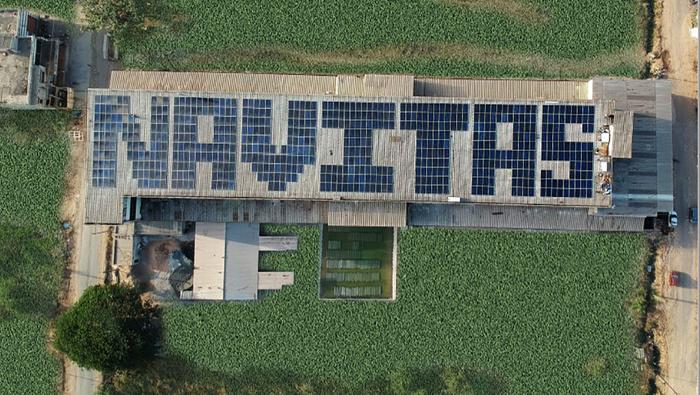
VIVEK VENKATACHALAM
CEO RaychemRPG
Next-Gen Solar Products Tailored for India’s Energy Transition
KEY HIGHLIGHTS:
Raychem RPG drives India’s clean energy with innovation and reliable grid solutions
Its solar connectors and junction boxes ensure top safety, efficiency, and durability
The company plans advanced solar solutions and locally made products for India.
QHow do you see Raychem RPG supporting India’s clean energy goals?
As CEO of Raychem RPG, I see our role as integral to advancing India’s clean energy ambitions We are committed to driving innovation in renewable integration, developing eco-friendly technologies, and enhancing grid reliability to support the nation’s energy transition Our purpose-driven approach centered on people, planet, and sustainable growth ensures that we are not only addressing today’s needs but also building a resilient and cleaner energy future for India
QWhat are the key features that make your solar connectors and junction boxes unique in the Indian market?
Raychem RPG is committed to developing solar products that deliver safety, reliability, and efficiency tailored to the Indian market.
JUNCTION BOX:
Raychem RPG’s advanced solar junction boxes are engineered for reliability and safety in the most demanding environments With IP68 ingress protection, they ensure consistent performance against dust and water exposure The housing offers outstanding thermal stability with a Relative Thermal Index of 125°C and is certified to UL-94 standards, providing superior fire resistance The design enhances current distribution, efficiency, and thermal

management compared to conventional solutions A low voltage drop with a maximum working voltage safeguards the system against hot spots and cell failures Together, these features make Raychem RPG junction boxes a benchmark in safety, efficiency, and durability for solar applications
CONNECTORS:
Raychem RPG’s solar connectors are built to deliver unmatched reliability and safety in solar installations. Certified to IP68 standards, they can operate for 24 hours submerged at one meter depth without any risk of shortcircuiting. With the highest pull-out force in the industry, these connectors provide exceptionally secure locking The ultra-low contact resistance of just 0 3 mΩ ensures minimal energy loss, resulting in a low temperature rise of only 24.9°C, even under rigorous testing from -40°C to 85°C Designed for strength and performance, they support high power handling, making them the ideal choice for dependable, long-lasting solar connections.

core of our product design Our offerings are rigorously tested for performance under the toughest environmental stresses and engineered to deliver consistent results over long lifecycles By leveraging advanced materials, robust insulation systems, and globally proven technologies adapted for Indian conditions, we ensure that our products not only meet but exceed safety and reliability standards, supporting uninterrupted and secure power delivery across the country.

QHow do Raychem RPG products ensure reliability and safety in India’s diverse climatic conditions?
India’s diverse climatic conditions demand solutions that can withstand extreme heat, humidity, dust, and high pollution levels At Raychem RPG, reliability and safety are at the
What future plans does Raychem RPG have for expanding its solar product portfolio in India?
Solar energy is a critical pillar of India’s clean energy journey, and Raychem RPG is committed to expanding its product portfolio to support this growth Our future plans focus on developing advanced balance-of-system solutions, enhancing safety and reliability in solar installations, and introducing nextgeneration power distribution and protection technologies tailored for utility-scale as well as rooftop solar projects We are also investing in R&D and strategic partnerships to bring innovative, sustainable, and locally manufactured solutions to the market, thereby strengthening India’s solar ecosystem and contributing meaningfully to the nation’s renewable energy targets
Raychem RPG powers India’s clean energy future with innovation and reliability.”
SAMIR KAJI
ManagingDirector SelecControlsPvt Ltd
Selec Empowers India’s Renewable Mission with 100% Indigenous Inverters
KEY HIGHLIGHTS:
Selec brings fully indigenous, worldclass solar inverters built on three decades of innovation
Its inverters ensure top performance, efficiency, and reliability for Indian conditions
Selec drives India’s self-reliance and global presence in inverter technology.
Selec is a well-established brand in industrial electronics What led you to enter the solar inverter market?
Having already honed the expertise in measurement and control techniques in the fields of electrical and automation, development of expertise in power electronics was the next step to giving Selec a more complete capability and the ability to enter the renewables space
Grid connected inverters are the basic ingredient of solar PV installations and therefore was the first product line in this space that Selec chose to enter
What does “Made in India” mean to you beyond just local assembly?
Making in India is possible in two ways: by Indian technology or borrowed technology (often SKD, CKD, or licensed in some form)
The first way requires building technology by Indians and owned by an Indian company It is the harder path that takes several years of nurturing and team building, but leads to a truly Atmanirbhar Indian enterprise This is the path Selec adopts.
At Selec, every aspect from people development, technology creation, product design (hardware, firmware, mechanical engineering) has been created in-house; creating products that are globally competitive in features and price Selec creates its own domain-specific manufacturing systems to build to the highest standards and high scale. All of this capability makes Selec unique in building a fully Indian product This is not the case for nearly the entire rest of the industry, which relies mostly on foreign technology or products

High performance: Our proprietary control algorithms, ensure maximum generation, minimum downtime, and superior grid stability
Low Startup Voltage (50V): Enables earlier morning generation and better output in low-light conditions.
What is the benefit of using on-grid inverters designed and manufactured in India, compared to imported ones? Q

Lower support costs: This allows adequate component level support, which ensures the lowest cost of future maintenance; and does not run the risk of complete replacement as is likely to happen, when technology is not owned Better Suitability: Our inverters are tested to every possible Indian Grid condition, which are unique as compared to some other parts of the world.
Thermal Efficiency: Matches or exceeds the thermal efficiency of the product and runs cooler than most competing products, allowing it to continue to generate power at higher ambient temperatures, where many competing products stop
Overall performance: A 3 3 kW Selec inverter with 540W TopCon panels delivered up to 22 units of daily generation in optimal conditions; among the highest for a product in this category
Selec emphasized customer focus. How does that reflect in your solar journey?
We will go to all lengths to see to it that a customer will not lose their sleep; that is our motto
Our existing nationwide network of 180+ sales and service engineers exists, and is available to support any Selec customer across the country This team is being further enhanced as Selec inverters reach more territories
How do Selec’s solar inverters stand out from global competition? Q Q Q
Self-reliance: This is truly the only way to making India Self-reliant Every time technology evolves, we in India will evolve to the next level on the back of our own capability This is a fundamental need for the future of the country to be independent in the field of technology
Assured long-term support: Our own engineers are here to understand and support, in any situation, and will always be around in future
How do you see Selec’s solar business contributing to India’s renewable energy goals?
Selec, with its Indigenous approach, will be the true backbone of India’s long-term goals We hope that the Indian buyers support this initiative so that Selec can grow and support more installations Selec, in a short span of under a year, has already established its credentials, built factory capacity and is ready to meet the high demands of the market.
Selec’s solar business supports national priorities in three ways:
Reducing dependence on imports by offering indigenous alternatives
Creating jobs and skills through local R&D and manufacturing
Delivering reliable, efficient products that accelerate solar adoption under schemes like PM Surya Ghar Muft Bijli Yojana
Our goal is to put India in the inverter technology map of the world.
What’s next for Selec in solar and renewable energy?
We will continue to develop the remaining range of inverters, including higher ranges and hybrids We will also continue in our tradition to create technology and encompass other areas in the renewables field.
Our next launch is the 10 KW 3 phase inverter Hybrids and other inverter ranges will follow in sequence
LEADERSHIP VOICES
ANIKET TONDARE
Director-Sales ECEIndiaEnergies
From Manufacturing to Market Leadership: ECE’s Growth Story
KEY HIGHLIGHTS:
ECE is expanding with a 2 GW fully automatic TOPCon module manufacturing facility, strengthening capacity and ensuring advanced solar technologybythisyear
By 2028, ECE will establish a 3 GW PV cell unit and 3 GW wafer facility, achievingfullverticalintegration
ECE tackles challenges through technology, introducing the Ecosystem App to improve efficiency, streamline operations, and empower partners with smartertools.
QWith the new corporate office in Pune and increased manufacturing capacity, what will be the immediate focus areas for driving sales?
With the upcoming launch of our 2 GW fully automatic TOPCon module manufacturing units, our immediate focus is on enhancing production capacity to meet the growing demand in the Indian solar market This expansion enables us to serve channel partners, industrial clients, and EPC projects more efficiently, ensuring timely delivery and superior quality
We also plan to establish a 3 GW PV cell manufacturing unit to integrate upstream production and optimize supply chain efficiency. Following this, a 3 GW solar wafer manufacturing unit will complete our vertical integration by 2028 These strategic steps reflect ECE’s commitment to operational excellence, market leadership, and delivering reliable, highquality solar solutions

QHow do you see the Indian solar market evolving in the next 3–5 years, and where does ECE plan to position itself in this growth story?
The Indian solar market is expanding rapidly and promises significant opportunities in the next five years ECE is focused on manufacturing high-quality panels while building robust partnerships with channel partners and industrial clients Our innovations and patents help us stand out, and with the new Pune office and increased production capacity, we are wellpositioned to broaden our sales reach and serve more customers effectively ECE’s emphasis on innovation, reliability, and value continues to underpin its strong market presence

QWhat are the biggest challenges in scaling solar sales in India policy, technology, or customer adoption and how are you addressing them?
The Indian solar market faces hurdles in policies, technology adoption, and customer awareness, impacting sales and project execution ECE addresses these through operational efficiency, partner support, and technology-driven solutions
A key initiative is the ECE Ecosystem App, which allows channel partners to manage business operations efficiently. It offers real-time product details, order tracking, project updates, and technical support, enabling partners to scale operations and serve customers effectively By leveraging technology and collaboration, ECE overcomes market challenges while strengthening India’s solar ecosystem
QIn a highly competitive solar market, what unique value does ECE offer to differentiate itself from other players?
ECE differentiates itself through innovation, quality, and end-to-end solutions Our integrated approach ensures reliability and builds trust with partners and clients. Initiatives like the ECE Ecosystem App empower partners to manage orders, track projects, and access support efficiently
At the heart of ECE lies the ECE Foundation a symbol of compassion and social commitment The foundation drives meaningful change through its five key focus areas: education, environment, health, employment, and shelter
Through initiatives like the ECE Manav Seva Urja Award, the foundation recognizes and uplifts young social workers, giving them a platform to showcase and expand their impact Under Vidyarambh, it empowers over 100 students from 1st to 12th standard with complete educational materials, nurturing dreams through learning With Devrai, it promotes environmental consciousness and sustainability nurturing nature and protecting the planet for a cleaner, greener future.
QHow is ECE contributing to employment generation and developing skilled talent in the solar sector?
ECE generates employment through the expansion of manufacturing units and project operations nationwide Through the ECE Foundation and internal training programs, we nurture skilled talent in solar technology, project management, and sales Hands-on training, workshops, and career growth opportunities empower individuals to excel in renewable energy, supporting India’s clean energy transition while fostering long-term workforce development

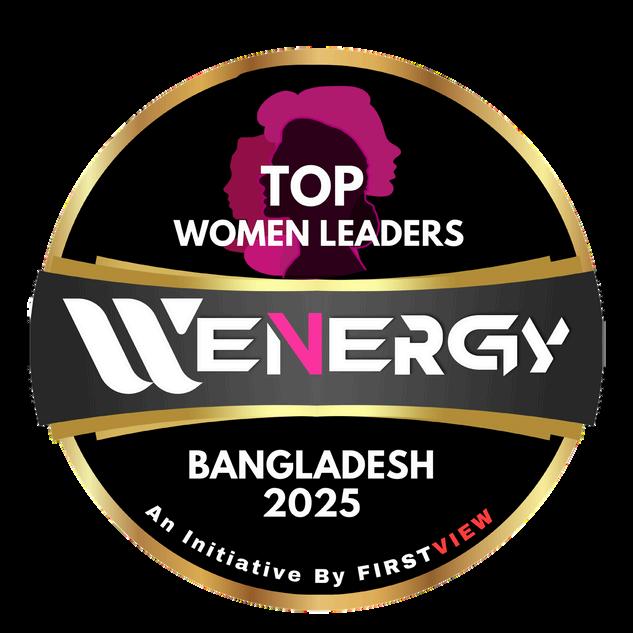
NADIAMOMENMUNNI

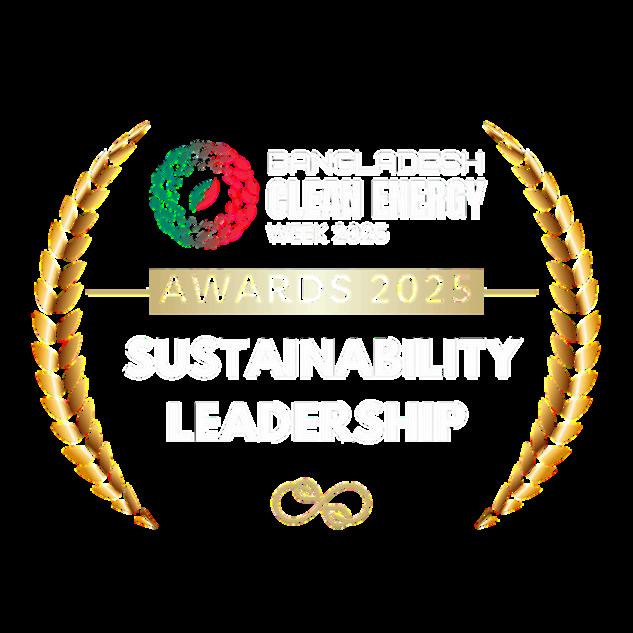
Business Development Manager
Global Renewable Energy Ltd.
ENGR.NAZNINAKTHER
Director - Business Development


Company of the Year: Sustainable EPC Practices
Vvon Technologies Limited
Company of the Year: Efficient Carbon Reduction








SOLARIC (Solar Intercontinental Ltd.) Excellence in Strategic Growth & Innovation
Solar Developer of the Year
SOLARIC (Solar Intercontinental Ltd.)
ShenZhen Growatt New Energy Co., Ltd. Top Hybrid Inverter Supplier in Bangladesh
Solar Company of the Year: Modules
JA Solar

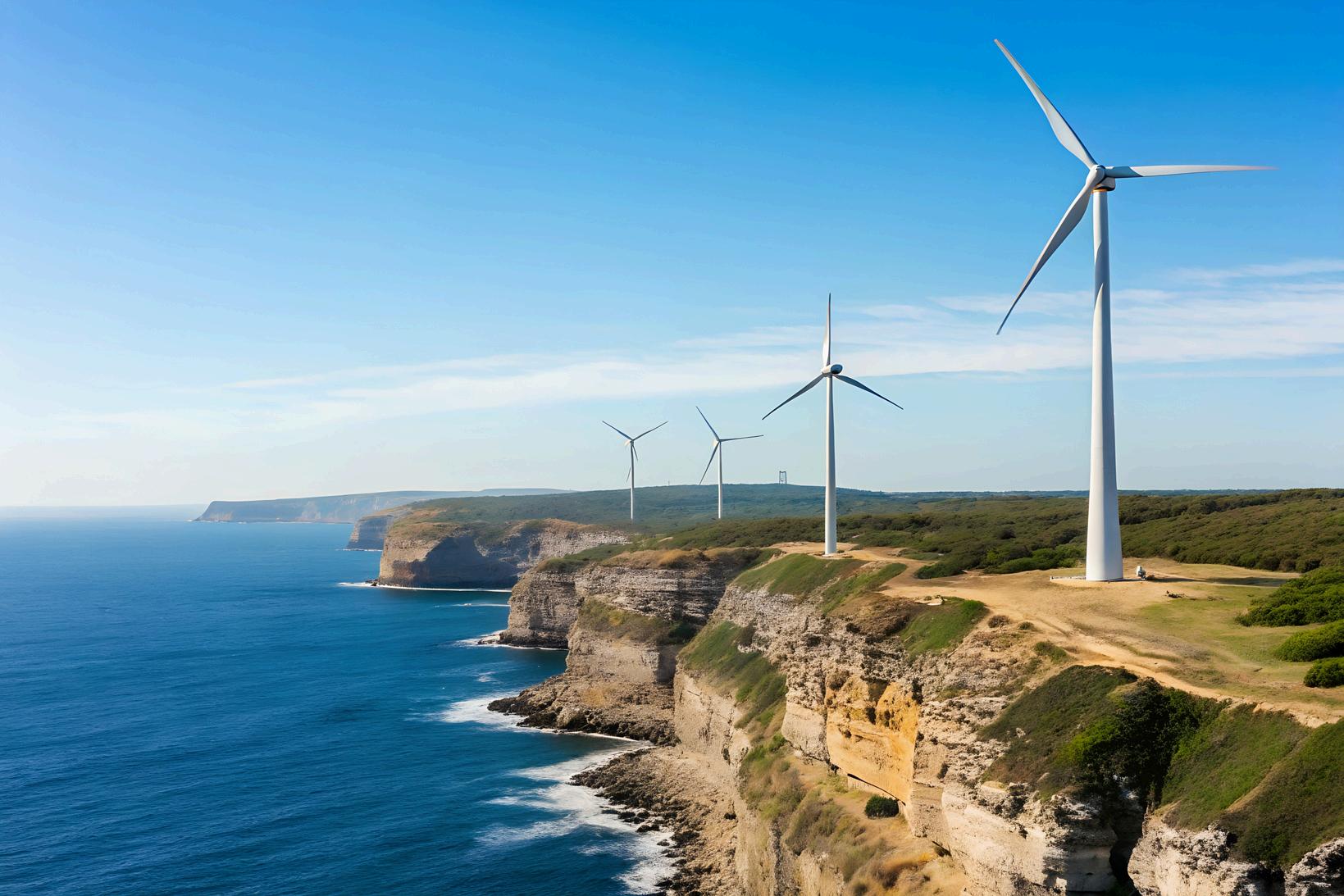
Super
Rancon Infrastructures & Engineering Ltd.
Excellence in Sustainable Business Leadership MD.ARIFULISLAM
Business Head & GM
Super Star Renewable Energy Limited

Best Solar Rooftop EPC Solutions
Co-Trust Tech Ltd.


Solar EPC Company of the Year
SOLARIC (Solar Intercontinental Ltd.)

Best Solar O&M Service Provider
SOLARIC (Solar Intercontinental Ltd.)
Service Excellence in Solar Monitoring Solutions
Suryalogix Pvt LTD
Service Excellence in Solar Engineering
Omera Renewable Energy Limited

Excellence in Technical Support & Troubleshooting
Solarhive PTE Ltd.



Rising Star in Design & Engineering
MDIMRANHOSSAIN
Design & Solution Engineer
Solarland Engineering & Development CO., Ltd.
Rising Star in Project Management

Best Solar Project of the Year - Automotive
Solar Power Limited
Best Solar Project of the Year - Hybrid System
Super Star Renewable Energy
Limited

Best Solar Project of the Year
- Commercial
Jinko Solar Co., Ltd.


Best Project in Circular Economy for Rural Communities
Rancon Infrastructures & Engineering Ltd.
Best Solar Project of the Year - Textile
SOLARIC (Solar Intercontinental Ltd.)





Best Solar PV Module Technology of the Year
Jinko Solar Co., Ltd.
Company of the Year – Rising Star in Module Manufacturing
Radiant Alliance Limited
Best Clean Mobility Startup of the Year
TAREKRAHMANKHAN
Manager, Renewable Energy
Rancon Infrastructures & Engineering Ltd.


Best Marketing Team of the Year
Super Star Renewable Energy Limited


Excellence in Consulting & Advisory Services
Mighty Green Ltd.

perational Leadership
MOHAMMADSUBAILBINALAM
COO
Rancon Infrastructures & Engineering Ltd.
Excellence in Renewable Energy Leadership
FAHADIBNISLAM
Country Director- Bangladesh, Nepal and Bhutan, SEA
Deputy Director (PIM), Team Asia, International Business Development ib vogt
JA Solar
Excellence in Strategic Advisory for Sustainable Mobility
DR.RUBAIYATISLAMSADAT
Chairman
Mulytic Energy
Excellence in Investor Relation Leadership
IMRANCHOWDHURY

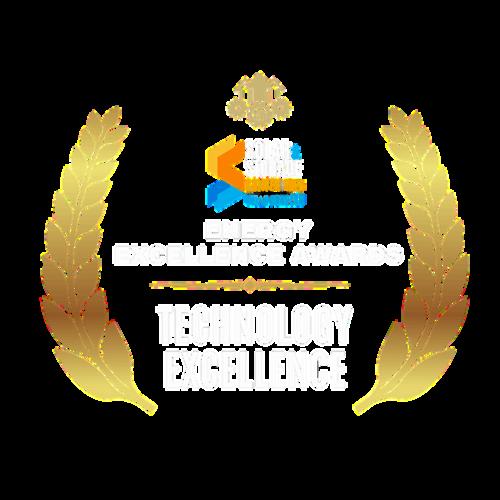



Excellence in PV Module Manufacturing
Saatvik Green Energy Limited
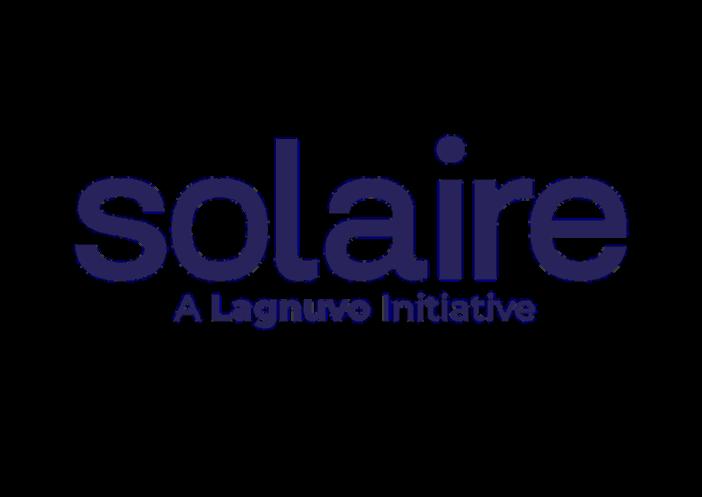
Innovative Technology Leadership Award: Inverter
Solaire- A lagnuvo Initiative



Excellence in Client Service & Engineering Support
Udaratva Private Limited
Indigenious Technology for Solar Inverter



Solar Developer of the Year

Selec Controls

Innovative Technology Leadership Award: PV Modules
Credence Solar Panels Pvt. Ltd.

State Developer of ChoiceC&I
Sunsure Energy





Solplanet State Technology Leadership Award - C&I Inverter


Indian Solar Manufacturing Excellence Award
Bluebird Solar Pvt. Ltd.
Advanced Monitoring & Control Technology Award

Best Solar Energy Management Project of the Year
ZauRays Solar LLP
Best Solar Project of the Year - Augasi Solar Power Plant, Banda
Sunsure Energy

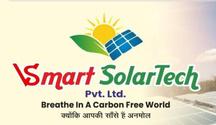



Emerging Solar EPC Company of the YearResidential (Platinum)
VSMART SOLARTECH PVT LTD
Emerging Solar EPC Company of the YearResidential (Diamond)
Power Group

Emerging Solar EPC Company of the YearResidential (Diamond)
Power Group


Best Operations and Maintenance Team of the Year
Best Land Acquisition Team of the Year
Best Project Financing Team of the Year
Sunsure Energy
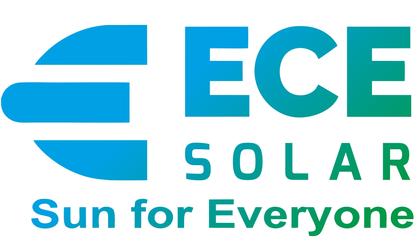
Best Channel Sales Team of the Year
ECE India Energies Pvt. Ltd.

Best Sales & Marketing Team of the Year
Solaire- A lagnuvo Initiative


Solar EPC Company of The Year - Utility
Solar EPC Company of the Year - Commercial
SOMAA INDIA PVT LTD

Solar EPC Company of the Year - Residential
Solexa Services Pvt. Ltd.
Ayodhya

Solar EPC Company of the Year - Industrial (Platinum)
Grun Power

Solar EPC Company of the Year - Industrial (Diamond)
SUN ACRHERS OPC PVT LTD

Woman Entrepreneur of the Year
Meenu Misra Director
Jaganlite India Pvt. Ltd.


Sustainable Product Innovation Award
Sawariya Chemicals

Community Empowerment through Clean Energy Award
Sunsure Energy
Sustainability Impact Leadership Award
U P TRIPATHI
Solar Entrepreneur
SAMAGRA ENTERPRISES


